








































































































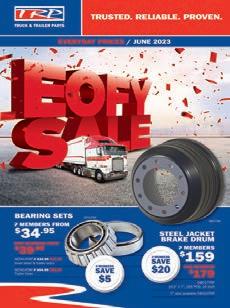

































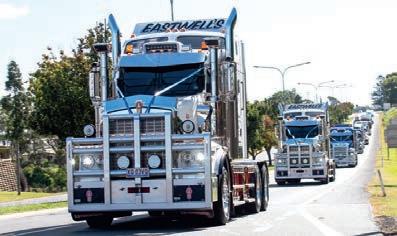









































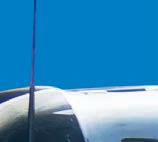



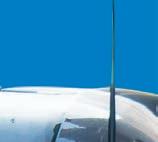















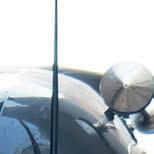






















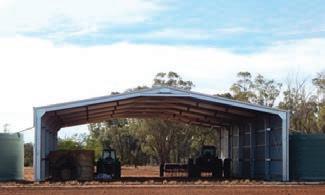
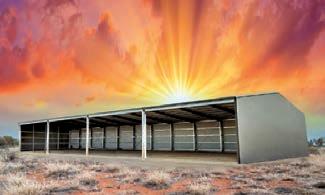






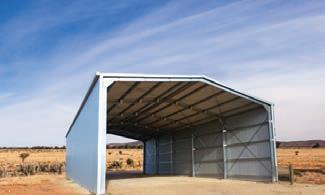
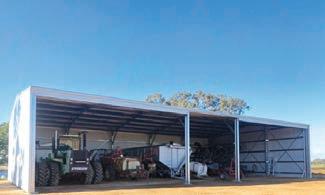
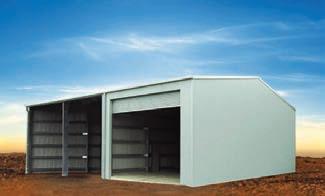



























































































































































































































































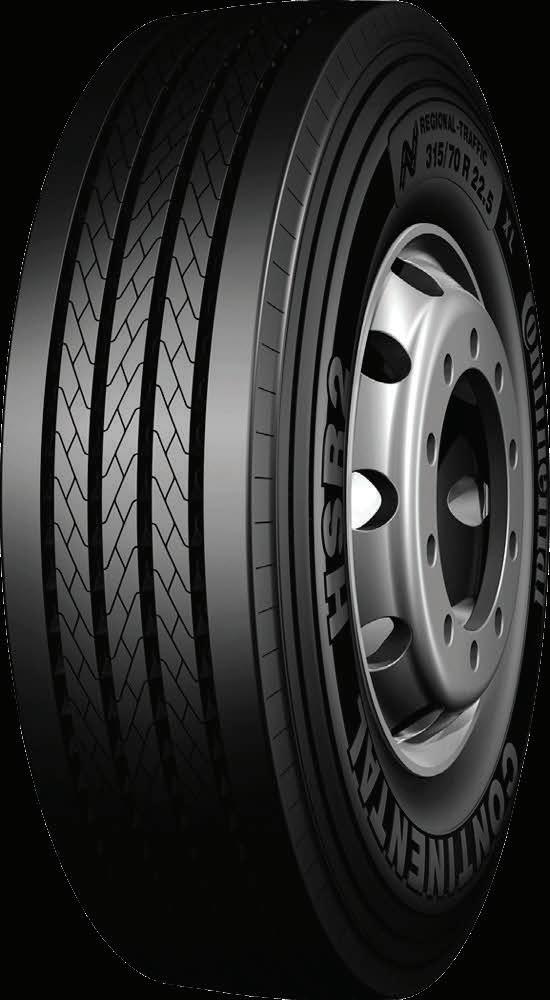
HSR2
HDR2+


56 COULD TRUCKS SOLD IN AUSTRALIA FINALLY BE GETTING IT RIGHT?


When it’s time to get to bed, Steve Brooks looks at whether size matters

64 PACCAR PARTS BRINGS CUSTOM TOUCHES TO THE TABLE

From chrome sun visors to custom steps and fuel tanks, blinging up the new truck just go easier
66 COLLABORATION BETWEEN NATIONS BRINGS BIG ISUZU TO LIFE Dreams of a 13-litre Isuzu prime mover are getting closer to becoming a reality

Trust is earned, not given. Fuso has spent 50 years in Australia forging a reputation as a leading brand you can count on. We’ve helped businesses build successful futures with durable trucks built by the world’s largest truck manufacturer, Daimler Truck. What’s more, our entire reliable range comes with a 5 year warranty,* plus the option of fast track finance with guaranteed future values. No matter the job, there’s a Fuso truck to get it done.
FOR MORE ABOUT THE FUSO TRUCK RANGE, VISIT FUSO.COM.AU

EDITORIAL
Editor Greg Bush
Ph 0408 780 302

E-mail Greg.Bush@primecreative.com.au
Journalist Julian Daw
E-mail Julian.Daw@primecreative.com.au
Technical Editor Steve Brooks
E-mail sbrooks.trucktalk@gmail.com
Contributors Warren Aitken, Robert Bell, Frank Black, Jacquelene Brotherton, Warren Clark, Rod Hannifey, Michael Kaine, Sarah Marinovic, Hayley Nicholson, Chris Roe, Ken Wilkie
Cartoonist John Allison
PRODUCTION
Art Director Bea Barthelson
Print IVE Print
ADVERTISING
Business Development Manager
Hollie Tinker Ph 0466 466 945
E-mail Hollie.Tinker@primecreative.com.au
SUBSCRIPTIONS
www.ownerdriver.com.au/subscribe
Phone +61 (0)3 9690 8766
Mon-Fri 8am-4.30pm (EST)
Email subscriptions@primecreative.com.au

Mail 379 Docklands Drive, Docklands, VIC 3008 Australia
EXECUTIVE GROUP
CEO John Murphy

COO Christine Clancy
Operations Manager Regina Fellner
Trader Group Sales Director Brad Buchanan
Last month Queensland turned it on weatherwise for the running of the 2023 Brisbane Truck Show which attracted, according to organisers Heavy Vehicle Industry Australia (HVIA), record crowds across the four-day event. Among those were visitors from New Zealand, Asia, Europe and the US.
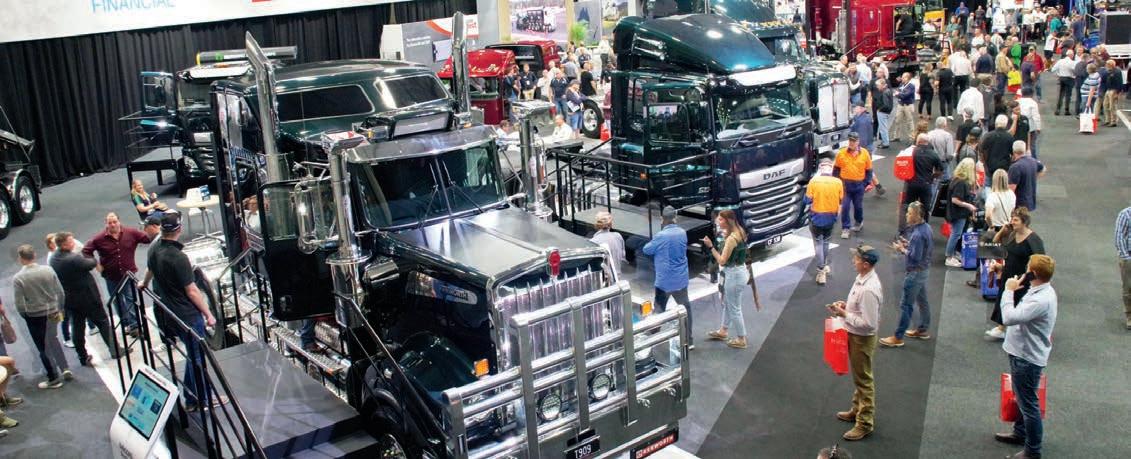
It was a spectacular affair as the emphasis turned to the electric vehicle industry, although an abundance of new diesel-powered models, mostly aimed at the longhaul market, kept the traditionalists interested.
The Brisbane Truck Show was part of Australian Heavy Vehicle Industry Week, which also encompassed the South Bank Truck Festival, the Heavy Equipment and Machinery Show and the Heritage Truck Show.
One of the big attractions at South Bank’s restaurant and bar precinct was the HVIA National Apprentice Challenge, although the younger brigade was more in awe of the almost one million Lego bricks that went into building a life-size Mack Anthem, aiming at a Guinness word record.
In addition, the Brisbane event also coincided with National Road Safety Week 2023, marking its 10th anniversary. The National Heavy Vehicle Regulator added to the safety aspect with its Don’t #uck With A Truck campaign, while the National Road Safety
Partnership Program encouraged safer interactions through it’s Look Beyond The Truck Campaign.
OwnerDriver magazine will present a full round-up of the Brisbane Truck Show in its July edition.
However, behind all the shine, innovations and new technology on show, the Transport Workers Union (TWU) reminded the industry of the 301 truck drivers killed since the Road Transport Remuneration Tribunal was abolished in 2016, including two at Scott’s Refrigerated Transport which recently ceased business.
The TWU held its National Council in Sydney, coincidentally at the similar timeslot to the Brisbane Truck Show, highlighting the need to raise safety standards via transport reform across the board, including the aviation industry.
The TWU has long sought a more viable rate, particularly for owner-drivers and small fleet operators. A six per cent hike in the Road User Charge, which could impact businesses to the tune of a sixfigure rise in annual costs, has NatRoad also calling for costs to he passed onto customers, ultimately raising prices for consumers.
Industry concerns are becoming louder and, while truck technology is making huge advancements, the voices focussing on safety and viability grow louder by the day.
Owner
ISSN
OwnerDriver magazine is owned by Prime Creative Media. All material in OwnerDriver is copyright and no part may be reproduced or copied in any form or by any means (graphic, electronic or mechanical including information and retrieval systems) without written permission of the publisher. The Editor welcomes contributions but reserves the right to accept or reject any material. While every effort has been made to ensure the accuracy of information Prime Creative Media will not accept responsibility for errors or omissions or for any consequences arising from reliance on information published. Opinions expressed in OwnerDriver are not necessarily the opinions of, or endorsed by the publisher unless otherwise stated.


Transport industry reform was top of agenda last month as the Transport Workers Union Council gathered in Sydney to discuss the state of the sector right now and what it believes should be done to make it better for all involved.
In a morning of action, the TWU led a march to highlight the 301 truck driver deaths that had occurred in the time since the Turnbull government decommissioned the Road Safety Remuneration Tribunal.

TWU National Secretary Michael Kaine said workers want to see urgent change to stop the rampant deaths in the industry.
“Today we pay tribute to 301 truck drivers killed since the Coalition abolished a road safety watchdog and refused to act to ease deadly pressures in the industry. Our deepest sympathies go to the families and communities torn apart by grief,” Kaine said on the day.
“There is a terrible human cost to the squeeze on transport contracts from the top of the supply chain. Pressure is piled on drivers and operators to speed, skip vital maintenance and drive fatigued.”
The gathered group were told of a driver killed in 2021 after the truck he was driving for Scott’s Refrigerated Logistics rolled and caught fire after hitting a tree at Forbes, NSW.
The TWU understands the driver had been working for roughly 24 hours despite calling in to say he was too fatigued to keep driving and he was told Scott’s would lose the contract if he didn’t continue with the delivery of fruit.
Former Scott’s driver John Waltis said the death of his colleague was a tragedy of the crisis in transport and showed why transport reform is so urgently needed.
“We were all shaken by this horrific incident, which could and should have been prevented,” Waltis said.
“This was the worst possible outcome of commercial pressures in trucking. JC knew he was too tired to do the run, but he had the
weight of the company’s survival on his shoulders.
“Everyone is responsible for the safety of themselves and others, but not everyone is held to account.
“Investigations are underway, but there are no eyes on the clients, and the pressure they’d put on Scott’s and ultimately on JC.
A total of 663 items from the Scott’s Refrigerated Logistics business have been listed for sale
Transport industry operators should prepare themselves for an onslaught of marketing activity as the Receivers and Managers of the Scott’s Refrigerated Logistics business look to step up the sales process and sell off all remaining fleet assets as smoothly as possible.
The Gordon Brothers Ritchie Bros. Alliance (GBRB) has been tasked with finding new owners for 245 prime movers, 317 refrigerated trailers, 38 rigid refrigerated trucks, 19 tautliner trailers and a host of support equipment that’s being stored throughout Australia at Ritchie Bros. seven yards.
GBRB Alliance head Andrew Cotton
“That’s why we need regulation, to stop the pressure on operators and drivers to take risks to stay in business.”
The TWU have resolved to continue to lobby Federal Parliament to pass reform to set enforceable standards in the industry, and for wealthy retailers, manufacturers and oil
companies to commit to safe, fair and sustainable transport supply chains.
The union also recently served a claim on the 40 top retailers, food and beverage manufacturers and agricultural companies operating in Australia, calling on them to sign up to a set of six principles for safer, fairer supply chains.
says the sale offers a great opportunity for other operators to boost their fleets.
“This presents a unique opportunity for participants in the refrigerated transport, freight, and logistics industries to acquire top-quality equipment immediately,” Cotton says.
“The fleet includes specialised refrigerated trailers, prime movers, and rigid trucks that are in high demand in the

secondary market.”
The assets will be sold via Ritchie Bros.’ Marketplace-E portal and Cotton says they’ll work with interested buyers to provide convenient access to the gear as needed.
For more information on the sale or to register to bid, interested parties are encouraged to visit the website ironplanet.com.au.
Transport workers and TWU national councillors took to the streets of Sydney last month to honour colleagues killed at work and call for government action on safetyThe Scott’s Refrigerated Logistic’s fleet is being sold off
WE’VE DOUBLED OUR WARRANTY TO 24 MONTHS ON ALL GENUINE PARTS WHEN FITTED BY AN AUTHORISED DAIMLER TRUCK DEALER.

More training, better opportunities and better promotion of the transport industry as a career option for anyone keen to get involved is at the heart of a new agreement between advocacy group Transport Women Australia Limited (TWAL) and Linfox.

Linfox Australia and New Zealand CEO Mark Mazurek says while his organisation is proud of the steps it has taken towards diversity, he knows there is more work to be done.
“Women have traditionally been underrepresented in the transport and logistics industry, particularly in operational roles,” Mazurek says.
“We are proud of the progress we have made, but recognise that we still have a long way to go before we achieve the diverse and inclusive workplace we aspire to.”
Linfox’s partnership with TWAL

will involve mentoring, the hosting of networking events and a joint approach to government relations and advocacy activities aimed at strengthening diversity in the workforce.
“We are serious about improving our female participation rate through increased opportunities and training and we are taking real steps to effect sustainable change,” Mazurek says.
TWAL chair Jacquelene Brotherton says the support of Linfox as a Gold Partner was great news for the organisation.
“We welcome the opportunity to strengthen the bond between our organisations and the benefits it will bring to both,” Brotherton says.
“Linfox has long supported increasing female participation in the transport industry.
“We look forward to the opportunity to strengthen our leadership support and the additional benefits this partnership will bring to our advocacy for industry diversity and inclusion.”
The latest partnership builds on
Linfox’s existing involvement with a variety of diversity focused groups including the Champions of Change Coalition, Wayfinder – Supply Chain Careers for Women, the Diversity Council Australia and the National Association of Women in Operations.
SUPERCOIL FEATURES
• Compliant Standards: ADR-38/05, Tested to DIN 74323, 74324 & ISO 7375 A1




• Anti Kink Thermoplastic Polyurethane material









• Excellent abrasion resistance

• Excellent mechanical properties, combined with a rubber-like elasticity

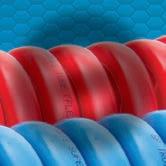

• Oil and Diesel resistance
• High UV resistance (>4000 hours of Accelerated Testing to ISO 4982-2)
• 40% lighter than traditional Type B Suzi-Coils
• High elasticity with excellent flexibility and recoil memory.
SUPERCOIL Compact 74mm diameter coil

Regular Suzi-Coil 130mm Diameter
Part# GP-7750 Long Tail Coil
Part# GP-7000 Short Tail Coil
TEC-CLAMP
SUZI-COIL CLAMP
The new 4 hole TEC-CLAMP allows you to lock in your lines and go! No tools or hardware needed for fast, easy installations!

Versatile design can be used with both rubber air hose or coiled tubing hook-ups.












GP-9888 3 hole NEW 4 hole

Part# GP-9889

POGO STICK & TECCLAMP COMBOS
Part# GP-925-C


Chromed steel heavy duty Pogo Stick
Part# GP-925-C3
Chromed Pogo
Stick with 3 hole
Tec-Clamp
Part# GP-925-C4

Chromed Pogo
Stick with 4 hole Tec-Clamp
GP AIR COUPLINGS TRUCK & TRAILER
Huge range of Air Couplings & Adaptors to suit your truck or trailer. GP Air Couplings & Adaptors are designed & manufactured to conform to the Australian Design Rules ADR-38/05, Australian Standards AS4001.3-2003.
The Volvo FM, FMX and FH Electric trucks minimize CO2, noise and air pollution and enable high-capacity regional transportation in areas also with strict sound levels and emission regulations. To simplify the transition to electromobility, the trucks are offered together with solutions for charging, route and range planning, energy status and more.
Volvo Trucks. Driving Progress

Members attending the recent Transport Workers’ Union National Council in Sydney have voted to pull out all the stops in a bid to see transport reforms pushed through Federal Parliament this year.
The council, made up of rank-and-file members who govern the union, also resolved to make applications to the Fair Work Commission to lift standards in aviation awards, and to launch a national campaign calling on state governments to address pay and conditions for waste workers following ongoing protected industrial action against Cleanaway.
The four-day event was opened by NSW Premier Chris Minns who committed to expanding NSW’s legal system that affords protections and minimum rates to owner-drivers to those in the transport gig economy. It was a sentiment supported later in the week, when the NSW Treasurer confirmed the government would expand workers’ compensation to cover transport gig workers.
Councillors also heard from Minister for Industrial Relations Tony Burke, Minister for Environment and Water Tanya Plibersek, NSW Minister for Industrial Relations Sophie Cotsis, Senator Glenn Sterle, Senator Tony Sheldon, workers, employers and industry associations.
A vigil and march was held in memory of truck drivers who have lost their lives at work and the TWU Council also resolved to campaign in favour of the ‘YES’ vote in the Voice to Parliament referendum in support of Aboriginal and Torres Strait Islander members.
Other highlights included special panels on how transport reform would support workers, businesses and supply chains to thrive. An industry panel collectively pushing for reform included Senator Glenn Sterle, ARTIO Secretary Peter Anderson, ACFS CEO Arthur Tzaneros, NRFA Vice President Glynn Castanelli, and NatRoad CEO Warren Clark.
TWU National Secretary Michael Kaine says the union is absolutely
determined to get lifesaving transport reform implemented in memory of every truck driver killed on Australian roads and the families and friends who grieve them.
“The TWU National Council had a successful week in Sydney firming up our plan to lift standards in transport with the express aim of having transport reform passed by Federal Parliament without hesitation.

“The NSW Government’s commitments to extend rights, protections and workers’ compensation to transport gig workers were welcomed with standing ovation. After 11 food delivery rider deaths since 2017, nine of whom died in Sydney, this is a lifechanging, lifesaving announcement. It is sorely overdue after years of inaction under state and federal Coalition governments.”
“I want to express my sincere gratitude to our valued clients and the exceptional staff over the years who played a crucial role in the success of Karl’s Transport.
and retire after two decades of transport
In 2002 Karl Thomas set out on his transport dream.
With one truck and a willingness to work hard he grew the business to the point where in 2004 he created a company and began investing.
Over the decades since then Karl’s Transport grew to have a fleet of 13 prime movers and 18 trailers, with a presence in South Australia, Perth, North Queensland, and the north Gold Coast.
It was a journey full of highlights, friendships and challenges, and one Thomas says was hard to walk away from.
“After careful consideration, I have made the difficult decision to retire and close Karl’s Transport,” he says.
“We encountered persistent challenges in finding qualified staff
for our business. Despite actively advertising job openings, we consistently experienced candidates failing to show up for scheduled interviews and the workload has become too much.
“It is important to clarify that our decision to close the business was not motivated by compliance, but rather a personal choice influenced by various factors.
“It was not a decision taken lightly. I appreciate the support of the industry and will fondly remember our commitment to high standards throughout the years.”
With the doors closing, Thomas says he would be selling his fleet via Ritchie Bros. Auctioneers – where he had bought the gear to start with, often guided by his late father Peter Thomas.
“I also extend my appreciation to my mother, Pat, sister, Bethany, and uncle, Neville, for their support in handling administrative tasks during the early years.
“My late father, Peter Thomas, shared my passion for trucks and attended Ritchie Bros. auctions with me, leaving a lasting impact,” Thomas said.

“I would also like to express my gratitude to Wildcat Diesel, Ringtread SA, and TAC Rentals for the valuable partnerships we have developed.”
Karl’s Transport fleet will be sold at the Ritchie Bros. National Unreserved EOFY Auction on June 21-22.
It includes an as new, unused, 2022 Kenworth W900SAR Legend, 3 x 2021-2014 Kenworth T909 6x4s, a 2017 Kenworth T900 6x4 Legend, a 2015 Kenworth T409 SAR 6x4, a 2010 Kenworth K108 6x4 Aerodyne, 2 x 2010-2008 Kenworth T608 6x4s, four more prime movers and a range of refrigerated and standard t railers.
LACK OF STAFF PROVES TOO MUCH FOR KARL’S TRANSPORTKarl’s Transport owner Karl Thomas with Ritchie Bros. territory manager Rory Mackin. Michael Kaine
The Master Code is a registered industry code of practice that was developed by the Australian Trucking Association (ATA) and Australian Logistics Council (ALC) in consultation with industry and registered by the National Heavy Vehicle Regulator (NHVR) in November 2018. It is a practical guide to achieving the standards of heavy vehicle safety and compliance required under the HVNL and is an authoritative source of information about safety in the heavy vehicle transport industry.

Like other registered codes of practice, the Master Code is reviewed periodically to ensure that it stays up to date with industry changes and improvements to safety.
Have your say
Provide your feedback and subscribe to updates on the review process at nhvr.gov.au/mastercode


The nation’s heavy vehicle truck fleet is getting a record-breaking makeover with 1,295 prime movers delivered in April alone, 259 more than the same time in April 2022.
So far this year, to the end of April, 4,910 new heavy trucks have been delivered to a market hungry for new stock.
Volvo is top of the tree for heavy truck sales in Australia, followed closely by Kenworth.

The big Swede won the battle for sales in April, selling 249 trucks to Kenworth’s 231, and year to date Volvo is on 994 deliveries to Kenworth’s 979.
The top two are more than 270 sales ahead of Isuzu which is pushing hard to build its strength in the heavy vehicle segment, delivering 192 trucks in April and 707 for the year so far.
Rounding out the April results were Scania (96), Mack (87), Mercedes-Benz (77), Hino (73), Fuso (73),
UD Trucks (72), DAF (63), Freightliner (26), MAN (20), Iveco (20) and Western Star (16).

Heavy Trucks and Light Trucks were the dominant sales drivers in the most recent April sales results released by the Truck Industry Council.

There were 1,277 Light Trucks delivered, up just over three per cent on April 2022 – a new Light Truck record.
Truck Industry Council CEO Tony McMullan says the April results are good news, particularly in light of the already impressive year to date results for the market.
“It is encouraging to see another good result in April to follow the solid first quarter figures,” McMullan says.
“It is particularly encouraging to see Heavy and Light Duty Truck segment sales showing such continued strength.
“We are currently sitting on record sales growth and that is a strong position to be in as we head towards the end of the financial year.”

Across all categories, including heavy vans, 3,613 vehicles were delivered in April. This was down approximately 560 units on the previous month of
March 2023, however up 307 vehicles, 9.3 percent, over April last year.

Year-to-date, 14,071 heavy vehicles had been delivered to the end of April, 1,948 vehicles more than were sold year-to-date April 2022 (up 16.1 per cent).
The Medium Duty Truck recorded 609 sales, a 0.3 per cent decrease (-2 units) over April 2022. Isuzu was the biggest seller in April with 304 deliveries, followed by Hino (150), Fuso (118), UD Trucks (16), Mercedes-Benz (6), Hyundai (5), Iveco (4), SEA Electric (4) and DAF and MAN with one sale each.
Isuzu continued to dominate in the Light Duty category where as extra 38 vehicles were sold in April 2023 when compared to April 2022.
Year to date there have been 5,199 “little” trucks delivered in Australia, 715 more trucks than the same period in 2022.
Isuzu notched up 536 sales in April and 2,471 sales year to date as of April 30.

In year-to-date terms for the Light Duty segment, the leaderboard starts with Isuzu (2,471), and rolls down to Hino (917), Fuso (888), Iveco (408), Fiat (195), Mercedes-Benz (152), Hyundai (66), Renault (57), Volkswagen (40) and Ford (5).

just 15 trucks away from being number one on



One of the more remarkable outcomes from the recent NSW State Election, apart from the change of government, was the conduct of both major parties during the election campaign. True leadership meant neither party succumbed to the personal denigration and vitriol which has dominated most election campaigns in this nation since the infamous Whitlam dismissal in the early ’70s. The election was indeed a true contest of policy. The new Premier’s victory speech was humble and circumspect, and the former Premier was gracious in defeat.
Contrast that, to when our industry went to war with itself in 2016 over the much-maligned Road Safety Remuneration Tribunal (RSRT). At most family gatherings, conversations about religion and politics are best avoided. In the road transport industry, discussions about RSRT and rates are usually added to those taboos, so I’m heading into dangerous territory.
What started as a perfectly reasonable attempt to realign the imbalance between price takers and price makers soon descended into outright conflict and, as with all wars, truth was very much the first casualty. Operators opposing market intervention were manipulated and coerced skilfully into an irrepressible force and by the time the cannons fell silent, neither the victors or the vanquished, could claim the high moral ground. In addition, both had plenty to regret from the vitriol and personal attacks launched in the heat of battle.
The final assault on the small brigade supporting market regulation and the Tribunal itself were as devastating and questionable as the Allies annihilation of the German city of Dresden in the closing stages of WW2.
Since 2016 our industry has continued to operate with an uneasy truce but eventually we have to have the hard conversations to prevent issues that were never settled at that time from continuing to fester. In September 2019 the Rural and Regional Affairs and Transport Committee of the Federal Parliament Senate commissioned an Inquiry into the Importance of a Viable, Safe, Sustainable and Efficient Road Transport Industry. Since then, the committee chair and inquiry convenor, Senator Glenn Sterle, has stridently emphasised that there is much more that unites our industry than divides us. It is important
however to note that without viability, safety, sustainability and efficiency are unachievable.
Ten recommendations from the Inquiry were handed to the parliament in August 2021 and with the change of Federal Government in May 2022 the recommendations are slowly and methodically starting to progress towards fruition.
The first recommendation involves the establishment of an independent body that will, in consultation with industry, set universal and binding standards. Already the misinformation and hysteria has begun with the Australian Livestock and Rural Transporters’ Association (ALRTA) making the unsubstantiated claim that they had seen a document that would lead to a repeat of the 2016 events. At least Australian Trucking Association chair David Smith was wise enough to suggest that discussions need to be tempered with respect.
There are many factors involved in the viability issue in our industry, ranging from recompense to both drivers and operators for undue waiting times, to prompt payment times and the fair distribution of fuel levies based on the real bowser price that most small to medium-sized enterprises are subject to as opposed to some vague notion of ‘terminal gate’ pricing. Also keeping control of our costs such as road user and toll charges are all areas where common ground can be found before going anywhere near pricing.
While we never again want to see the overreach of the RSRT orders of 2016, anyone who thinks that rates are not already being set in our industry has clearly, not recently, tried to negotiate with any of our industry’s major freight forwarders in any industry segment.

Negotiations will begin with you being
CHRIS ROE has been involved in the road transport industry for almost five decades. He is currently a board member and Victorian delegate of the National Road Freighters Association. Contact the NRFA at nrfa.com.au

required to supply a raft of business information about, but not restricted to, insurance policy numbers and expiry dates, vehicle registration and expiry dates and enough information on drivers and their licences to be a scammer’s smorgasbord. What will be totally not negotiable will be the recompense you require for your services – “that’s the rate mate, take it or leave it”. Often on a Friday afternoon and a thousand kilometres from home, “leaving it” isn’t a realistic option.
It is strange, beyond being funny, that some of the loudest voices and strongest opinions on rates and viability come from transport media personalities who, by their own utterances, are either retired with a relative degree of comfort or happy in the employ of others with no desire to ever return to the ranks of business ownership or operation.
If you believe that you have an opinion or an idea that is worthy of consideration, and if you are not one of the authors of the 138 written submissions, or one of the 150 people who appeared in person before the Senate Inquiry and you want to be heard, please consider joining or at least contacting one of the industry associations to present your case. I would even suggest that anyone who has read or heard interviews from Transport Workers Union (TWU) national secretary Michael Kaine or read the columns of TWU NSW secretary Richard Olsen might be surprised to find that there is nothing too radical in any of their endeavours and might find their organisation (an MOU partner of the National Road Freighters Association) very approachable.
For all this industry’s lip service and pious murmurings about mental health, healthy heads and RUOKs to be taken seriously, future debates need to be conducted as robustly as possible without resorting to the personal attacks so prominent in 2016.
As the new NSW Premier noted in his victory address, he could not guarantee that all future elections would be conducted in the same collegiate spirit but there was no longer any reason why they couldn’t be.
“Without viability, safety, sustainability and efficiency are unachievable.”








Tthree hundred. It’s the number of truck drivers who have died since the Turnbull government tore down the road safety watchdog and put nothing in its place. By the time this is printed, it will likely be more. That’s 300 of almost 1300 people who have died in truck crash deaths since 2017. It’s not counting the 11 delivery riders and one rideshare driver who have died in the last few years, under the same deadly pressures as truck drivers and operators face: to rush and work longer and harder.
Those hundreds of people were brothers, sisters, mothers, daughters. They had families and communities, and their deaths have shattered thousands. Already, almost every truckie out there has terrible stories about this industry. A survey the Transport Workers Union (TWU) did in 2021 showed that almost half of drivers knew someone who was killed at work.
We know that the pressures on ownerdrivers are even greater: long hours, tight margins, clients who demand faster, cheaper, better when you’re already at the brink. That same survey showed over half of owner-drivers have delayed vital truck maintenance because they couldn’t afford it.
We saw that just recently with Scott’s. I talked to one of the subbies who was owed up to $200,000 in the weeks leading to the collapse. He had to tell his mechanic to stop working on his trucks because he couldn’t afford the bills. He didn’t know when he was next going to find work – and he probably won’t see any of his missing money. He’s not alone: 52 per cent of truck drivers have experienced wage theft. That’s without even getting into the gig economy, where roughly half earn under minimum wage after costs.
Drivers don’t get behind the wheel wanting to work themselves to the bone. This deadly pressure comes from the top of the supply chain and, without change, the deaths are only going to keep adding up. Forty-two per cent of owner-drivers have kept quiet about a safety concern out of fear they’d lose pay.
It happens again and again and again. The gig economy, this tsunami of exploitation, has rushed to meet a crisis that was already pushing the trucking industry to breaking point. Too often the answer is more bureaucratic measures on truck drivers that don’t solve
anything. I’ve heard from drivers only recently who’ve been penalised up to $700 for logbook spelling mistakes from weeks or even months past. Not only is it completely over the top, it’s doing nothing to address fatigue.
Over-zealous logbook-checking is not going to reduce deaths. We’re not going to get anywhere unless we address the heart of the problem.
Those 300 deaths, and the hundreds of others who have become casualties of this industry crisis - that’s why this industry is united. We don’t want to see more deaths, more businesses go under, more heartbroken communities. We need safer, fairer, more sustainable transport. We need it urgently.
Put it this way: if this year follows 2022’s trends, over a hundred more people will die in truck-related crashes before the end of 2023. Already 86 have died, 24 of them truck drivers.
Every year we mark those deaths at Workers’ Memorial Day, and pledge to honour them and continue fighting for the living. Well, this year we have to fight harder than ever, because change is possible but not guaranteed, and it will not come easily.
Making this industry better starts with reform. It has to. It means not just stopping deaths but making jobs

in transport once again attractive to people and viable careers – careers that are safer, fairer, more sustainable. I know how many drivers and operators love their jobs but say it’s just getting too hard to make a decent living.
Of course it’s getting too hard.
When you’ve got Amazon exploiting thousands on rock-bottom rates, and wealthy clients and companies pushing drivers and operators to the brink, it’s no wonder this industry is in crisis.
We are never going to get a better time than this to get the reform trucking needs. This industry has never been more united.
We need truck drivers to have a say in what works, because you’re the ones who know your industry best. We need fairer cost recovery and payment terms, especially as fuel costs and inflation continue to be high.
We need safer work during natural disasters like floods and fires where owner-drivers and operators often end up footing the bill instead of wealthy companies.
Stakeholders from every corner of the industry are agreed on the need for reform: major retailers and supply chain clients, transport associations, transport operators, even gig giants who have traditionally been reticent to close loopholes that have been advantageous to them.
There are the outliers, of course, companies like Aldi and Amazon that refuse to join calls for reform because being part of the problem is profitable for them. These companies, among others, are exactly the reason we need reform and a fair playing field for all.
The Albanese government has committed to introducing that reform. This commitment is a significant step forward, and comes from years of campaigning from truck drivers, operators and others from all around the industry. It provides hope for addressing the cannibalistic competition that is destroying transport as we know it.
Every one of those 300 truck driver deaths is a tragedy. One death is one too many. Our call on Federal Parliament to back transport reform becomes more urgent every day, because we know that change will save lives, and lead to a safer, fairer, more sustainable industry.

“52 per cent of truck drivers have experienced wage theft.”

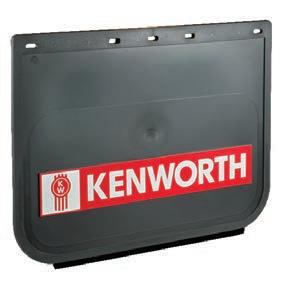





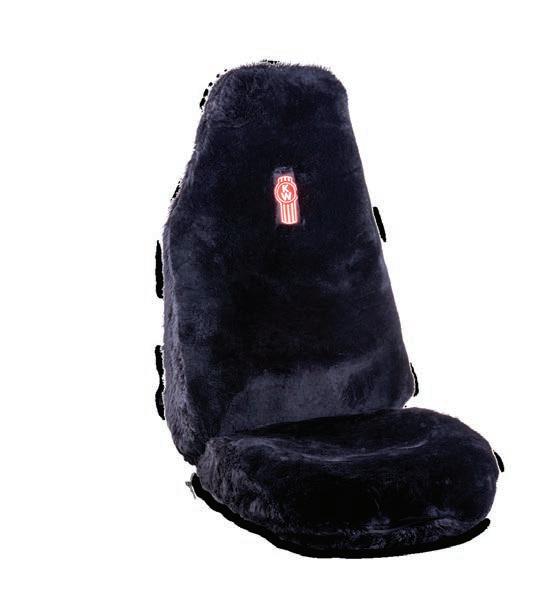




A lifelong truckie, Shaun ‘Chucky’ Cronin’s personal and professional life took the biggest hit of all in April when he was diagnosed with a terminal illness. But with the support of his employers, workmates, friends and family, Chucky and his life partner Hayley were able to fast-track their wedding, bringing a ray of light to their darkest of days. Warren Aitken writes


You know what I love about our industry – about truckies as a whole? We do stick together. When times get tough that legendary brotherhood of the road is still there. It still exists. Sure, we operate in a different environment to what some class as the good old days of trucking. Yes, we are rapidly losing those roadhouse diners where there’s more BS around the table than there are potholes on the Newell.

Yes, there’s a higher chance of you hearing an “I’ve got a big …” over the two-way than you are receiving the traditional ‘truckies wave’ as you pass a fellow traveller. And it may be true that the ancient, practiced art of ‘creative logbook writing’ has been lost to the annals of history as our roads are swamped with Safe T Cams and our phones are inundated with Logbook apps. But when push comes to shove, truckies still look out for truckies. And old school truckies have a bond that ties them harder and faster than the legendary rigs they used to fly down the highway in.
Today’s story is here to remind us that when the proverbial effluent hits the rotating arrangement of vanes or blades, truckies stand up.
On April 18 this year I received a phone call from a friend of mine, Craig Palmer. Craig works for Eastwell’s Haulage. A week before he called me, one of his workmates had his whole life turned upside down.
Shaun ‘Chucky’ Cronin had been doing what he was born to do, that’s drive trucks, drive trucks and drive trucks. He was up in the sparkling Queensland town of Emerald when the minor stomach pains he had been ignoring escalated. I’m talking bad enough that it took three paramedics to get him out of the truck.
While the boys at Eastwell’s had often said Chuckys’ Kenworth addiction was at a point you’d have to drag him out of the truck kicking and screaming, this was not the kind of situation they had joked about. Chucky was rushed to hospital where he was assessed and diagnosed. The hospital food and sponge baths may have been to Chucky’s liking, but the diagnosis wasn’t.

Above:
Chucky was diagnosed with Metastatic Mucinous Adenocarcinoma. Now most of us would have absolutely no idea how to pronounce that, much less understand what it is. Suffice to say, it isn’t good.
The Mucinous Adenocarcinoma part of that threeword sentence is bad enough on its own. It’s a very rare cancer. Add in the Metastatic part and it basically means it’s spread. Far and wide. It’s a life-ending
“In less than a week this lifelong truckie … had his world turned upside down.”
Top: All of Chucky’s loves in one photo, Hayley the kids and trucks. Or should it be trucks, Hayley and the kids?

Above: The escort team, not your usual hospital pickup but it drew a crowd. Ken and Michelle Hawes took Hayley, while Chucky rode with his eldest daughter Jessica and driver Jason

Below: You can’t keep a good man down. Sadly the doctors won’t let him drive but it wasn’t for lack of trying
prognosis. In less than a week this lifelong truckie, who started his career in the flat-out flying days of the late ’80s, had his world turned upside down.

Hence why Craig rang me. He wanted to not just share the story but also give me the opportunity to share in a memory-making event.
Chucky had been torn from one of the loves of his life, his truck. But while he still had fight in him, he was determined to solidify the other loves of his life. His fiancé Hayley and their eight kids. Please indulge me as we share his story.
Chance meeting
Chucky ‘picked up’ Hayley almost a decade ago now –
“The minor stomach pains he had been ignoring escalated.”
At Mack, we’re proud of our long history of manufacturing trucks in Australia. Since 1963, we’ve been designing and building tough and smart trucks like the Mack Trident, the ultimate in versatility for line-haul and heavy construction assignments. Its axle forward configuration is perfect for tipper and tipper, dog set ups, and its Mack MP8 500hp or 535hp engine delivers up to an impressive 1,920 lb-ft of torque. On the road, Trident is the ideal combination of power and productivity. It’s capable of hauling up to 131 tonnes, and its intelligent design means it leads the way in fuel efficiency and driver comfort. Make your own history with Mack, and talk to your dealer today, or visit MackTrucks.com.au/Trucks/Trident/

the picked-up part I mean quite literally. Chucky had run out of hours on his way south from Cairns. He was carting produce for S&G Transport and pulled into the Caltex in Rockhampton for his break when he saw the young Hayley hitchhiking.
“I spotted her there at Rocky, I checked to make sure she was all right, hanging out there at night,” says Chucky. Being the truck-driving gentleman he was, he offered her the top bunk in his truck. He filled in his fatigue break while getting to know this lady who was hitching her way down to Brisbane. When the logbook was good to go Chucky escorted Hayley all the way back down the Bruce highway and, basically, the two of them have been together ever since.

“We’ve had some adventures along the way,” Chucky laughs.
“One time when I was doing the Cairns-BrisbaneMelbourne-Adelaide run I flew Hayley down to Adelaide, we got a motel room down there and when we were there she told me the glass was a one-way glass so we could see out but people couldn’t see in. So I’d been wandering around starkers. I realised you could see everything when I went out to have a cigarette and looked back in the window.”
The two of them were made for each other, both independent, both hard workers and both madly in love. Along with Hayley, Chucky also became a stepfather to Hayley’s four young kids. That family soon grew, with Hayley recalling the exact moment she found out about child number five.

“Keep in mind when we met Chucky told me he can’t have kids,” Hayley recalls. “One day when he was on his
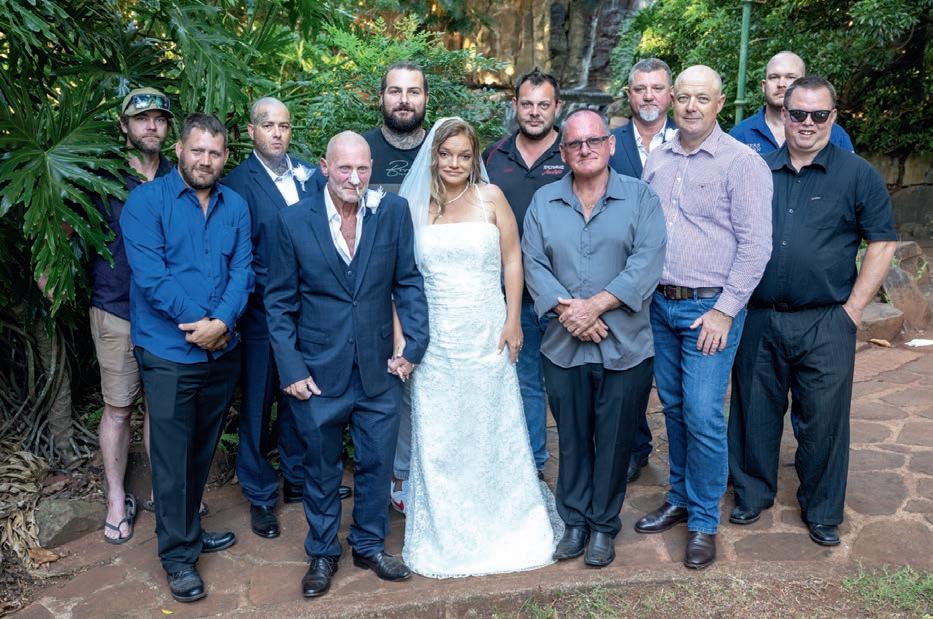
“We’ve had some adventures along the way.”
The Australian-exclusive 48X is the perfect partner. Featuring a set-forward front axle, powered by a Detroit DD13 Gen 5 or DD16 engine, with a fuel tank volume of up to 1,500 L, over 130 tonnes GCM, and a BBC of 113", the 48X boasts up to 600 hp and 2,050 lb-ft. Available with a choice of four sleepers and in a 6×4 wheel configuration, the 48X is just right for any B-double application.
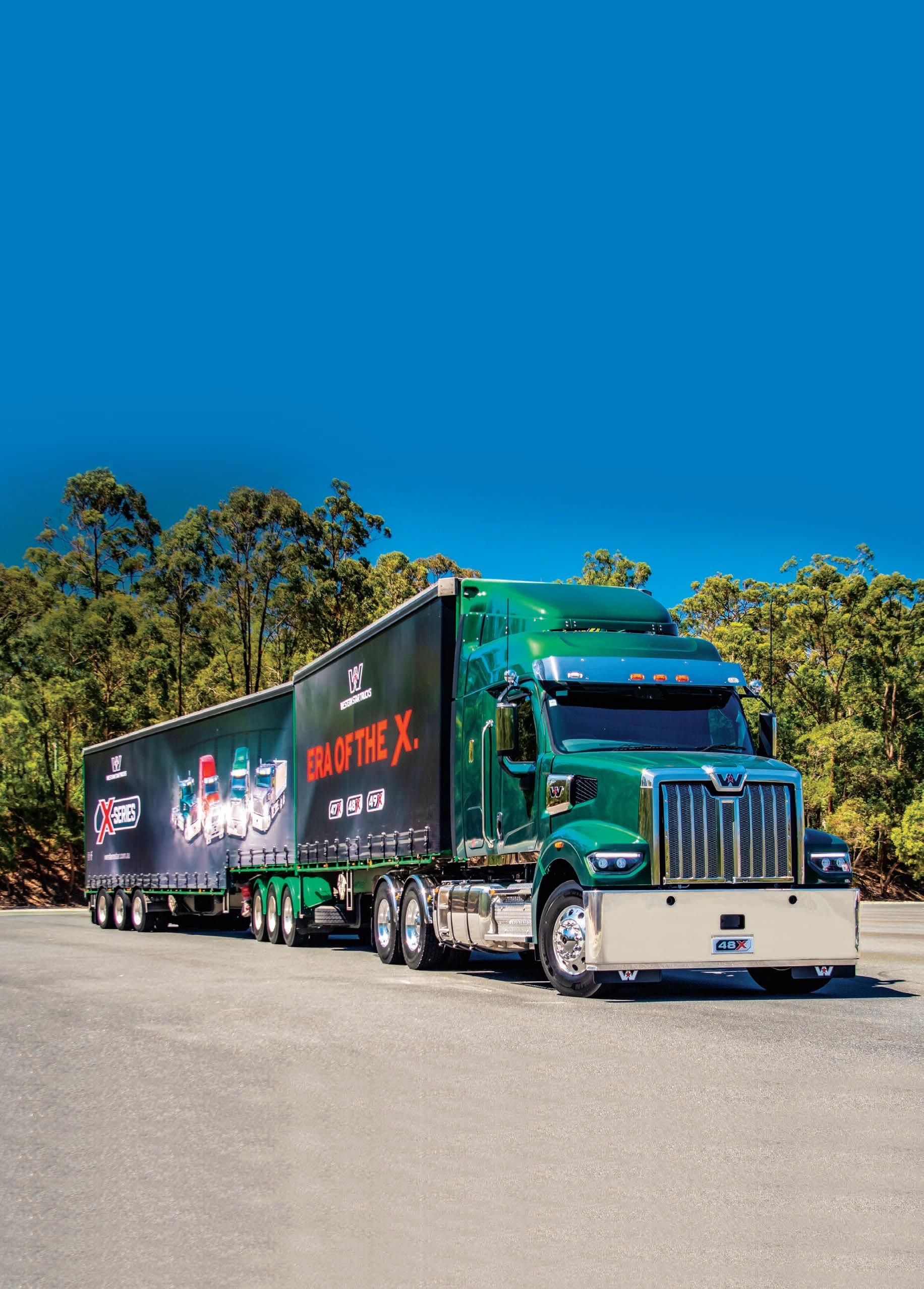














24-hour break in Brissy I went to see him and he said to me, ‘Your boobs have gotten bigger’. I brushed him off but later found out we were expecting Sasha.”
Being young at heart Chucky was stoked. On the high side of 50 he was suddenly becoming a father. Hell, he enjoyed it that much he carried on, adding in child number six, seven and eight.
After driving for over 30 years, everything was falling into place for Chucky. He had the woman of his dreams, he was a dad to eight amazing kids and the couple had just purchased a house big enough for their tribe on some land out near Jondaryan, north west of Toowoomba. Top that up with Chucky having his dream job – driving a whopping big Kenworth hauling road trains for a company he loves – Eastwell’s Haulage.
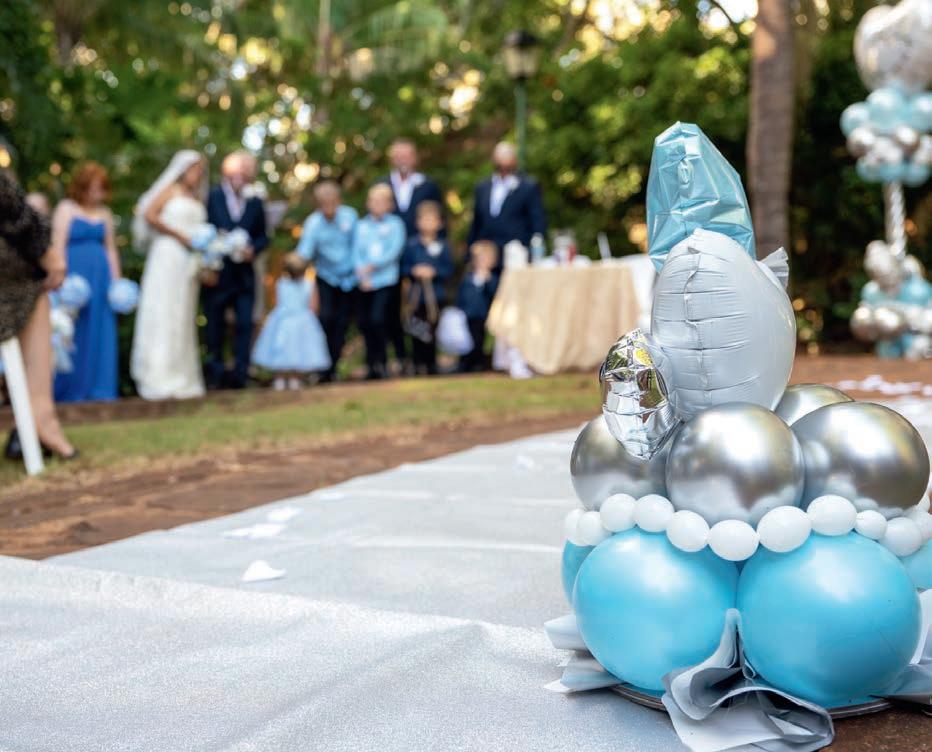

Diminishing health

That brings us up to the start of 2023 when life just got flipped on its head. When the doctors told Chucky exactly

When you’re running a trucking business, or you’re out on the road, trust is everything. You need a team behind you that you can rely on - people you know are always on your side.
At UD Trucks, we have one of the widest networks of sales and service experts dedicated to your success. From local dealership managers to finance specialists, from performance specialists to truck technicians, our people take the time to get to know your business, and they work with you like they’re part of the team.

T o find out more, contact your UD Trucks dealer on 1 300 BUY A UD or visit udtrucks.com/australia

how dire it was, there was only one thing he wanted, that was to get married. A wedding had always been on the cards but even Hayley laughingly admitted, “He’s always been married to the truck; there was never enough time for anything else.”

Chucky’s diminishing health meant the organisation of the world’s fastest wedding. There would be a small window when the hospital would be able to dose Chucky up enough to be able to leave the hospital and make it through the day, but it had to be soon. Hence the speedy organisation of the wedding. Six days to be precise.
Basically, that gets us up to the part where Craig rang me, and this is the part I was most keen to share with our readers. Because this is the part where we should all be proud of the transport family we are a part of.
The trucking brotherhood and sisterhood stepped up. Hayley and Chucky’s mates took over the six-day planning schedule for the wedding like they were highly qualified allocators. They found a location available, organised a celebrant on short notice, managed to sort out all the seating and decorations, found suits and, most importantly, a wedding dress. Chucky’s years in the industry meant there were countless people not just willing but wanting to help. It was an amazing effort. His impact on the industry was never more evident than with his current employer, Eastwell’s Haulage. The family-owned company made sure that all those who wanted to get home for the event were indeed able to attend, fitting loads and schedules around Chucky and Hayley’s wedding. Some drivers had worked right
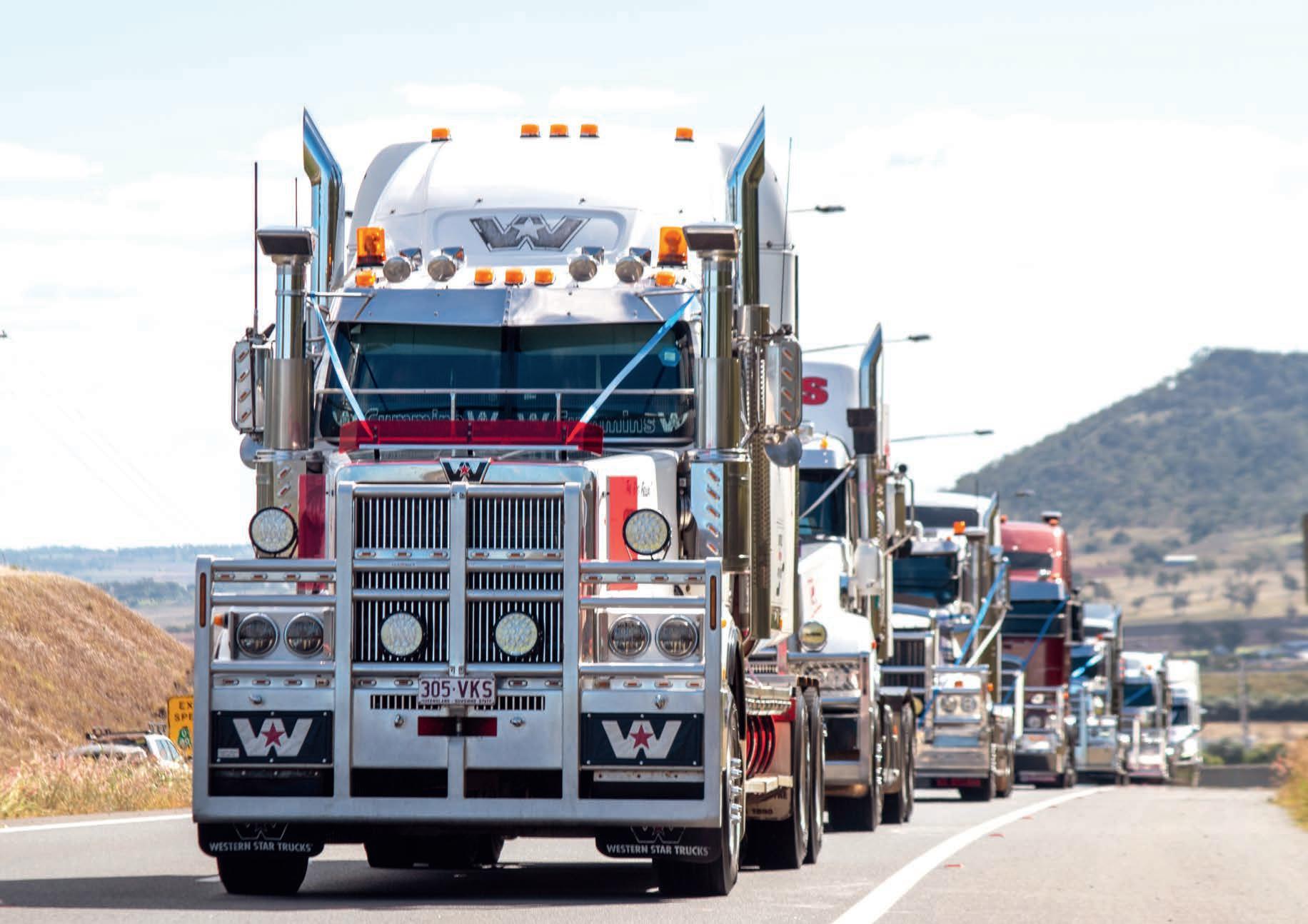
“He’s always been married to the truck.”
MAN’s powerhouse, the TGX with 26 t GVM powered by MAN’s mighty 15 L 640 hp D38 engine, comes with a range of cabs including the maximum GX cab – the king of the jungle!
Excellent in line haul, roadtrain and heavy haulage applications, the TGX 26.640 GX is MAN’s premium offering. With a class-leading 840 hp engine braking capability, no load or terrain is too challenging.
Visit man.com.au to learn more about our new MAN truck generation and how it delivers excellent driver fit, great efficiency and economy features, and optimised uptime, and makes for a strong business partner.

up until the morning of the event and still put the effort in to clean up their trucks in order to participate in the surprise convoy that escorted the couple to the wedding. Craig’s original request of me was to share a little of Chucky and Hayley’s story, and the camaraderie that was shown by the industry in these tough times. Which is what I am doing now. However, I was thankful that I, along with partner Michelle Williams of Michelle Williams Photography, were able to volunteer to do the wedding photos for the couple. Helping to record the day for Chucky, Hayley and their kids.
It was a fantastic day. Under such terminal conditions there was so much laughter and reminiscing. There was plenty of stories being told, most of which I can’t share for censorship reasons. It was a day where the best part of our industry was on display. Mates standing up for mates. Our industry has gone through changes and will always do so. At the core of it all though are a lot of good people. People that can stand up and be counted on. It was great to see those old-school practices in action. It’s just a pity it’s under such incurable conditions.
For those wanting to help the Cronin family, a GoFundMe.com page has been set up under the name of ‘Loving truck driver (Chucky) and family man’ by Hayley Chilton.


Top: To be able to put on a wedding and get such a turnout on just six days’ notice is a testament to how much our industry still stands up when it counts
Above: More attention for Chucky, this time from Sasha and the twins;

“It was a fantastic day.
Under such terminal conditions there was so much laughter and reminiscing.”
WE’VE DOUBLED OUR WARRANTY TO 24 MONTHS ON ALL GENUINE PARTS WHEN FITTED BY AN AUTHORISED DAIMLER TRUCK DEALER.



back to their community, although there was still major work to do. We had two loads delivered direct to Dubbo for open trailers, then one tautliner for that triple and I had three tautliners. We got into Katherine on Tuesday evening where the loads all had to be transhipped onto local company trucks who are approved into those areas. We unloaded Wednesday, then off into Darwin to load Friday. I had another 24 hours while the others loaded Thursday, thinking that was the best use of the time so I could get straight back to Dubbo.
It’s been a busy month. I put my hand up for a position on the Australasian College of Road Safety to both try and get a truckie’s point of view included and to have someone who lives on the road involved. There are many people with distinguished careers and qualifications behind them but from where I sit none live on the road or have much of a clue about trucks. But we will see.
I have just emailed Queensland Department of Transport and Main Roads (TMR) about the alignment of the large reflective signs for the new speed cameras on the Cunningham Highway and the ‘Road Subject to Flooding’ signs on the Bruce. My understanding is that road signs should be aimed five degrees away from traffic to stop them ‘blinding’ you with your own lights. Many of these large reflective signs appear to be aimed directly at oncoming traffic. Not real road safety then?
The next was about the section of road north of Augathella where they have taken away the shoulder altogether and left a steep slope on either side – really good for a triples’ run on! Previously I needed a spot to stop there and there was nothing for kilometres.
Then I contacted Road Safety NT about the Barkly Highway road failures. One of our drivers warned me about them but they are savage and, while marked, some of the signs are not well put up. I will be following up with a list of green reflectors and further suggested sites.
I started with three capitals in just over a week – Melbourne, Brisbane and then into Sydney as a single. Before I left Dubbo for Sydney I received a call asking would I load Friday and go to Melbourne? Not my first choice, as I would be stuck in Melbourne from Saturday, but would
do it if I had to. The next call said there might be something else, but we’ll see. Into bed, up and unloaded Friday morning and was told to go back to the yard as I could not load till after 11am. I had been told we had four trailers to load for Katherine, but it was my back trailer. So I said, “well, are we transhipping or am I going to Katherine?”
The next call confirmed Katherine, but we had to have two triples there by Wednesday, so much to sort out. I was nearly due for a 24 hour break, and confirmed I could have one when I was back into Dubbo from Sydney, leave early Sunday with two trailers, hook up the third at Bourke and reckoned I could make Katherine by Tuesday night or Wednesday morning. Now this was all about the NSW Rural Fire Service responding to a call to help an NT community who had been flooded and all moved out but wanted to get
ROD HANNIFEY, a transport safety advocate, has been involved in raising the profile of the industry, conducting highway truck audits, the Blue Reflector Trial for informal parking bays on the Newell, the ‘Truckies on Road Code’, the national 1800 number for road repairs proposal, and the Better Roadside Rest Areas Group. Rod is the current president of the NRFA. Contact Rod on 0428 120 560, e-mail rod.hannifey@bigpond. com or visit www.truckright.com.au
I loaded my three trailers Friday morning and was off, just making it back into Bourke Sunday night and then Dubbo Monday morning, having dropped the third trailer at Bourke. But then I grabbed some clothes and a shower at home, went back to work, grabbed my A-trailer and off to Newcastle to load for Newcastle then reload for Central Queensland. I delivered there Thursday but then ran into my 84-hour rule.
I ended up having another 24 in Maryborough so I could load Brisbane on Friday night, deliver to Coonamble on Saturday morning and then I was present at the Trackmaster Caravan Club rally Sunday morning in Narromine.
I just made it in four hours Saturday morning, so I told them I would be staying and making it another 24 to be good for work next week. I had a kip, spoke to a few and was then invited to their dinner at the United Services Club in Narromine, then back and to bed.
ABOVE: Six trailers of gear to help out an NT community


BELOW: Hanging out with the vanners at the Trackmaster Caravan Club rally in Narromine
I had planned to give a one hour talk on Sunday morning. It lasted a bit longer than that and I had many come back to the truck for more questions and a look in and over the TruckRight Industry Vehicle. I had many people thank me, saying they had learned something about trucks. A few said they would now have more respect for truckies. Overall, it was worth the effort. One bloke said it was good to see people in the industry making the effort to do such talks.
I welcome others to either make the effort or let us know what they have done to improve truckie/vanner on-road relationships. There will be even more caravans on the road into the future. We can either try and educate and help them understand us, or we can make it worse. Which will you do?
“A few said they would now have more respect for truckies.”
Ph:

Fax:
Fax:
davids@gibbsparts.com





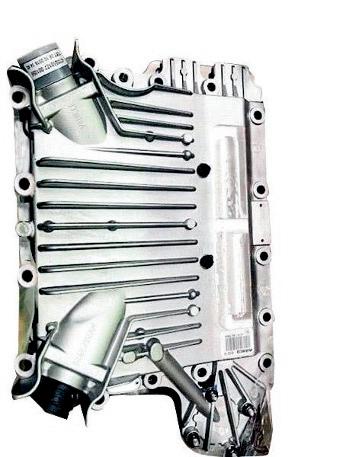


davids@ggd.net.au
Web: www.gibbsparts.com
Web: www.gibbsparts.com

As some of you reading this may know, Highway Advocates was founded upon an idea, one that meant that drivers and operators might begin to receive advocacy aimed squarely at what many regard as oppressive enforcement. That was two years ago, and much has happened since then.
If you think enforcement was tough back then, you ain’t seen nothing yet … as they say. The National Heavy Vehicle Regulator (NHVR) was not then ensconced in New South Wales and we had still not seen the end of the COVID-19 restrictions and the accompanying permits. Let’s not forget the $5,450 fines handed out like raffle tickets for the slightest error with those confusing and everchanging permits. Much has been written about Police enforcing the Heavy Vehicle National Law (HVNL) and now we also have the NHVR expanding their wings. Transport for NSW and Transport and Main Roads (Qld) are also dipping into your pockets.
One glaring takeout we see across the board is the absolute lack of discretion applied combined with, in many cases, blatant overcharging. Many clients come to us with multi-sequence matters; the current record is 77. NSW and Victorian Police are the main culprits, with South Australian Police coming not far behind.
In NSW, multi-sequence court attendance notices have an extra sting in their tail. Each sequence attracts a $175 court cost and victim impact levy.
In a recent NSW matter, the NSW Highway Patrol, having seized our client’s work diary, proceeded to charge
him with 49 sequences under the HVNL. This alone would attract $8575 in court costs, notwithstanding over $500,000 in potential maximum penalties and 21 demerit points.

The court costs are regarded as a fine under the Fines Act in NSW and are vigorously pursued as such.
This matter was finally dealt with under appeal to The District Court. Our delighted client received a total fine of $1000 and four demerit points. The Court, upon our representations, considered the combined effect of the potential fines, court costs and demerit points, and resentenced accordingly.
Our question is, therefore, why can’t prosecuting authorities do the same?
In NSW, police can put charges on what is known as Form 1. What this means, in effect, is that only one principal charge may be put to the court, while the others are listed but not charged. This aligns with the known principles of totality and multiple offences. There are provisions in the HVNL that also deal with these principles. In addition,
HVNL s590 provides that an authorised officer may give a formal warning for many offences under the Law, excluding substantial and severe mass, loading and dimension offences, and substantial, severe and critical fatigue breaches.
Let’s not forget that minor fatigue breaches for exceeding maximum work periods for standard and BFM hours are not considered contraventions of the law anyway. Yet, they are all routinely prosecuted without discretion. It’s almost as if they want to take drivers off the road and destroy lives.
We also have concerns about how evidence is obtained. In the case above, many of the 49 sequences were charged using Google Maps. Not just the maps feature itself but the average driving time logarithm that Google utilises. Many of the sequences had an average speed of less than 90km/h, yet the police stated that Google said it would take a ‘light Vehicle’ over an hour to travel that same route.
We would probably find thousands of Google search results that indicate the earth was flat if we needed to. Would that stand up as evidence? Probably not. Similarly, police are obtaining GPS data from the ‘responsible person’ for the heavy vehicle, then reconstructing drivers’ work diaries to allege fatigue and false and misleading entries. We say there is no lawful avenue for the police to reconstruct in this manner. However, the elephant in the room is the Chain of Responsibility (COR).
Suppose the person responsible for the heavy vehicle supplies the GPS data to the police. Doesn’t the responsible person for the heavy vehicle need to check the drivers’ work diaries against that GPS data to ensure compliance? One would hope that this was not an actual business model.
One of the tools in our substantial arsenal is our partnership with Logmaster. Their electronic work diaries (EWDs) and Transport Compliance Module are second to none. Often, when appearing in court with these multisequence matters, one of the major factors, in many cases, of having all charges dismissed without conviction, are work diary entries produced by Logmaster. They show The Court that our client has accepted responsibility, is remorseful and unlikely to re-offend in the future.
Numerous electronic work diaries are available today, but there is only one that Highway Advocates chooses to partner with. The Logmaster platform allows users to share their driving and compliance records with us so that we may demonstrate to The Court these important principles. With supervised intervention orders becoming more common, we can also comply with order requirements easily, saving our clients an administrative burden.
So, contact us when you cop those multiple charges. As lawyers to the transport industry, you can benefit from our industry insider experience combined with the obvious benefits that a Logmaster Regulator-approved EWD and Transport Compliance Module may bring to the table (or bar in some cases.)
“NSW and Victorian Police are the main culprits.”
Letters to the Editor need to be typed or clearly handwritten and be no more than 500 words. Letters should include name, title (e.g. owner-driver, manager) and city for publication, unless otherwise requested. Letters may be edited for clarity or space. Please be concise, so we can offer more people an opportunity to express themselves.
SEND YOUR LETTERS TO: Greg.Bush@primecreative.com.au or 379 Docklands Drive, Docklands, VIC 3008 We prefer letters by e-mail, but handwritten letters will be accorded the same opportunity to be published.
In regards to logbooks, those pushing for EWDs (electronic work diaries) are the only ones set to gain. It’s no secret that the ones pushing have a personal financial interest and push it through their association. Why do we currently have 6 x EWD providers yet only 1 x paper logbook to choose from? The decks a bit stacked there, just make the paper one smaller, pretty easy really.
Also if you make a mistake in the paper one you do have the right to cancel the page and start again. The EWD does the same, it’s just the mistake is not visible. By all accounts you can go back in anytime and edit it to get the green compliance tick.
It should be up to the individual which system they prefer. Personally l prefer the paper log as we spend way too much time relying on and using our devices.
We hear a lot about operators getting whacked for 15 minutes
etc. Do the authorities not realise that the rounding up/ rounding down rule can actually cause this? Now the EWD users are going to say that it doesn’t happen using an EWD and you can actually do more because of it. Well done to the EWD users, you just gave your employer more of your time for free on your kilometre rate.
Think about it!
All we need is one operator to prove in court that the counting up/counting down rule is the reason for the breach and set a precedent.
As an operator we run NHVAS accreditation for mass, we do our quarterly compliance statements etc, give ourselves a non-conformance and a corrective action if we breach. If we had fatigue management we would be doing the same compliance.
Now, if we employed drivers, carried out our audits etc and found a driver has breached we would have to do a non-conform-
ance and corrective action on that driver. We would have to include that driver in the audit and discussion, give him a copy of the NCR etc and educate him on his error. All good and well until a week later the authorities wheel him/her in and go through the logbook. Should a copy of the NCR be a get out of jail free card?
The issue has already been highlighted and dealt with by the employer yet the driver will no doubt now cop a fine for something that’s been dealt with/highlighted.
Most of us know we have stuffed up, hence the lost logbook issue. The authorities need to work with us a bit more here. It’s a pretty simple fix really, there should be a provision for the employer, whether they are NHVAS accredited or not, to audit and issue an NCR which would carry over to a roadside intercept.

l don’t get a fine for last week’s axle weight breach as l dealt
with it internally. Isn’t it better being pro-active not reactive in regard to compliance? Is that not what the NHVR want with their safety management push? Now where are all the associations on this? Too busy selling us down the drain to get a seat at the Labor table.
Now look where that has got us with road user charges and registration increases. History shows drivers shouldn’t run associations for truck owners!
Andrew Hammond Flipper Express Mitchell Park, VicIsn’t it totally sad when an editor does a copy and paste of a picture of a truck from web accessible photos and the photo is almost totally irrelevant to Australian road transport operations.
Even sadder is where the CEO of the association does not pick up the error and approves the publication for release.
Luckily the depicted prime mover is right-hand drive (most often that is not the case)!
Notably the vehicle depicted on the front and rear cover of the Australian Trucking Association’s most prestigious report is a European 4x2 CoE prime mover hauling a mid


located triaxle semi trialer.
This combination appears to be operating along the M61 Hull to Manchester Motorway in England!
The adoption of this photo as the cover feature so imparts the contents, from cover to cover, the same extent of prestigious relevance of this report.
What a total waste and insult to the local industry!
Arnold McLean Wheel Focus Engineering and Certification KeiravilleNSW
“History shows drivers shouldn’t run associations for truck owners!”

If you are like me, you have already perused the pages before you, checking out the photos and deciding whether they were interesting enough to entice you to read the accompanying article. If you have made it this far then I’ll accept the compliment that the photos have done their job. Or maybe you are just reading this because quite frankly the photos don’t align with the clichéd vision of a hard-working Australian grain carter and your curiosity
has peaked. I cannot argue with you there. In days gone by if you headed inland from any of the major cities in pursuit of some grain carting road trains you would be expecting to lay eyes on some black smoke blowing, deep throat rumbling, big, bonneted beasts build for the tough Aussie conditions. Farmers and contractors with their tough-asnails old Kenworths, Heritage Western Stars and Mack Super-Liners were the backbone of the Australian grain market. That’s what you

used to find out in the paddocks and fields of Australia.
Over the decades those old-school cool trucks have all but disappeared, replaced with a lot less billowing smoke, but still the regular gaggle of big-bonneted truck brands. Where the smoke may have declined, the cosmetic appearance of the new-age grain trains has exploded. Seems almost every grain truck out there these days is sporting more and more chrome, miles and miles of
Grain haulage rigs are generally of the bonneted variety, but one company on Queensland’s Darling Downs has changed tact, opting for Mercedes-Benz trucks, including the pride of the small fleet –a stunning black Actros 2663. Warren Aitken writes
Top: QS Commodities’ driver Craig might not be impressed with me taking photos before he did his housework but I couldn’t wait to show off the space inside the big Actros
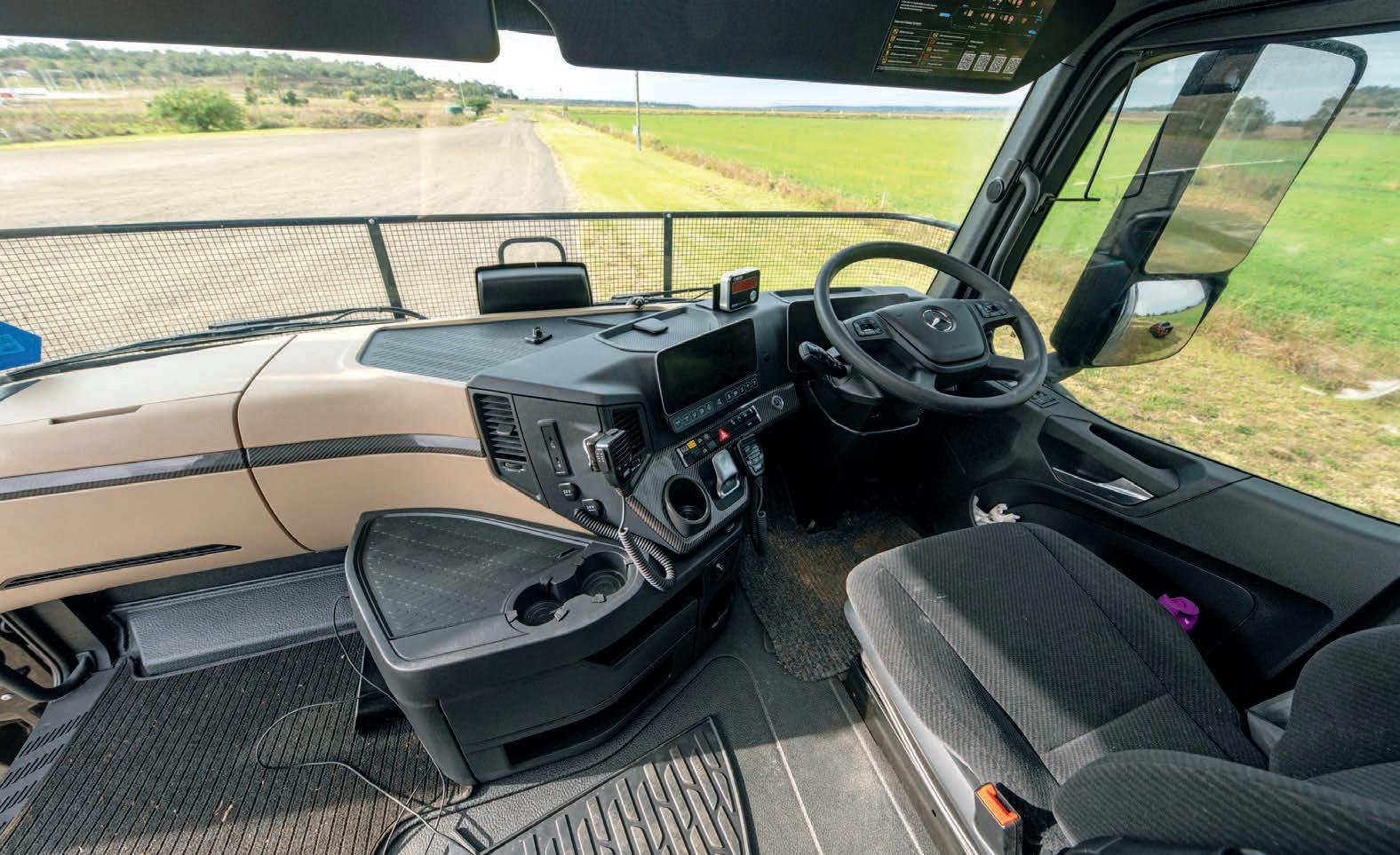
Above: Dual fridges, foldaway bed and a high enough roof that you can do star jumps in

Opposite top: Former driver, current operations manager and aspiring male model, Dave Sefton loves the challenge and satisfaction he gets working with QS Commodities and setting up the big Mercedes-Benz rigs
Opposite bottom: Another regular occurrence for the QS trucks is a quick stop and quality check before the load gets dropped off
stainless and, between the trucks and the A-doubles, they are responsible for ensuring truck wash manufacturers are permanently in the black. Big bonnets, long wheelbases and plenty of shine, that’s how a grain truck rolls. Until now.
In the Queensland city of Toowoomba, west of Brisbane and in the heart of the Darling Downs is a company that, as you can see, has flipped the script on the grain truck image. This stunning big black Mercedes-Benz Actros 2663 isn’t a one-off, it’s the 10th Benz QS Commodities has put on the road.
QS Commodities are rewriting the whole idea of what works as a grain truck, and with massive fuel savings, top-of-the-line driver comfort, and the backing and support of Daimler Trucks, they are doing a fantastic job of it. Times are definitely changing.
How did we get here then? I’m not talking about here as in reading this article. That’s fairly obvious, you loved the photos, and my witty attempts to amuse you previously have you coming back for more. No, I’m asking
how we got to this story. How did QS Commodities end up with a spectacular fleet of German giants gracing the Queensland roads?
For the history I sat down with Dave Sefton, QS Commodities’ operations manager to learn the full story. Before you start assuming Dave is a suit-and-tie kind of operations manager let me correct you – he’s not. In fact, Dave hasn’t been off the road long enough to buy himself a suit and tie yet. He’s a lifelong truckie who happened to take a driving job where his boss, whom we’ll get to soon, realised Dave’s the sort of bloke that would make a great operations manager. He knows trucks, he knows trucking and he understands drivers.
Dave is a fellow Kiwi who travelled across the ditch in 2006 to chase the dream of driving road trains. “I’m a third-generation truckie, I’d never been on a plane in my life and in 2006 booked a one-way ticket over here so I could drive road trains,” he explains.
Dave achieved his dream. He’s towed all manner of road trains, done express freight, grain carting and fridge work. In fact, there isn’t a lot Dave hasn’t had experience in during his three decades of driving. He’s seen it all, done it twice and is still smiling.
However, it was his proclivity for road trains and grain cartage that led him to take on a driving role with QS Commodities last year. However, as I mentioned, his boss Nick Slipper was a smart enough man to recognise and acknowledge that he himself may know a bit about trucks, but someone like Dave knows more about trucking and would be more useful to the company outside the comfy Mercedes-Benz seat and running the transport side of QS Commodities.
Now that we’ve introduced our protagonist for the story, let’s focus on the big QS Commodities on the side of the truck you’ve been admiring. The reason it doesn’t say ‘QS Transport’ is simple. QS Commodities isn’t actually a transport company.
“I’m a third-generation truckie.”
I can see how many of you would be under the impression it is a transport company. It has all the correct attributes, a fleet of stunning state-of-the-art trucks all paired with immaculate PBS-approved A-double tippers, all of which are dressed in black and sporting a proud QS Commodities logo.
However, QS Commodities is a grain trading company that happens to have its own trucks. Nick Slipper, along with a business partner, began the company in 2017. Nick has been involved in grain since he left university way back in the days when it was almost a given that the grain trucks belched black smoke. It’s always been his passion, buying and selling cottonseed, coarse grains and pulses. Working with the international export market, as well as the domestic market and several major feedlots – that’s where QS Commodities started.

During the early years of the company, all the product that was being traded was shipped around the country on subcontractors’ trucks. That was until just a couple of years ago.
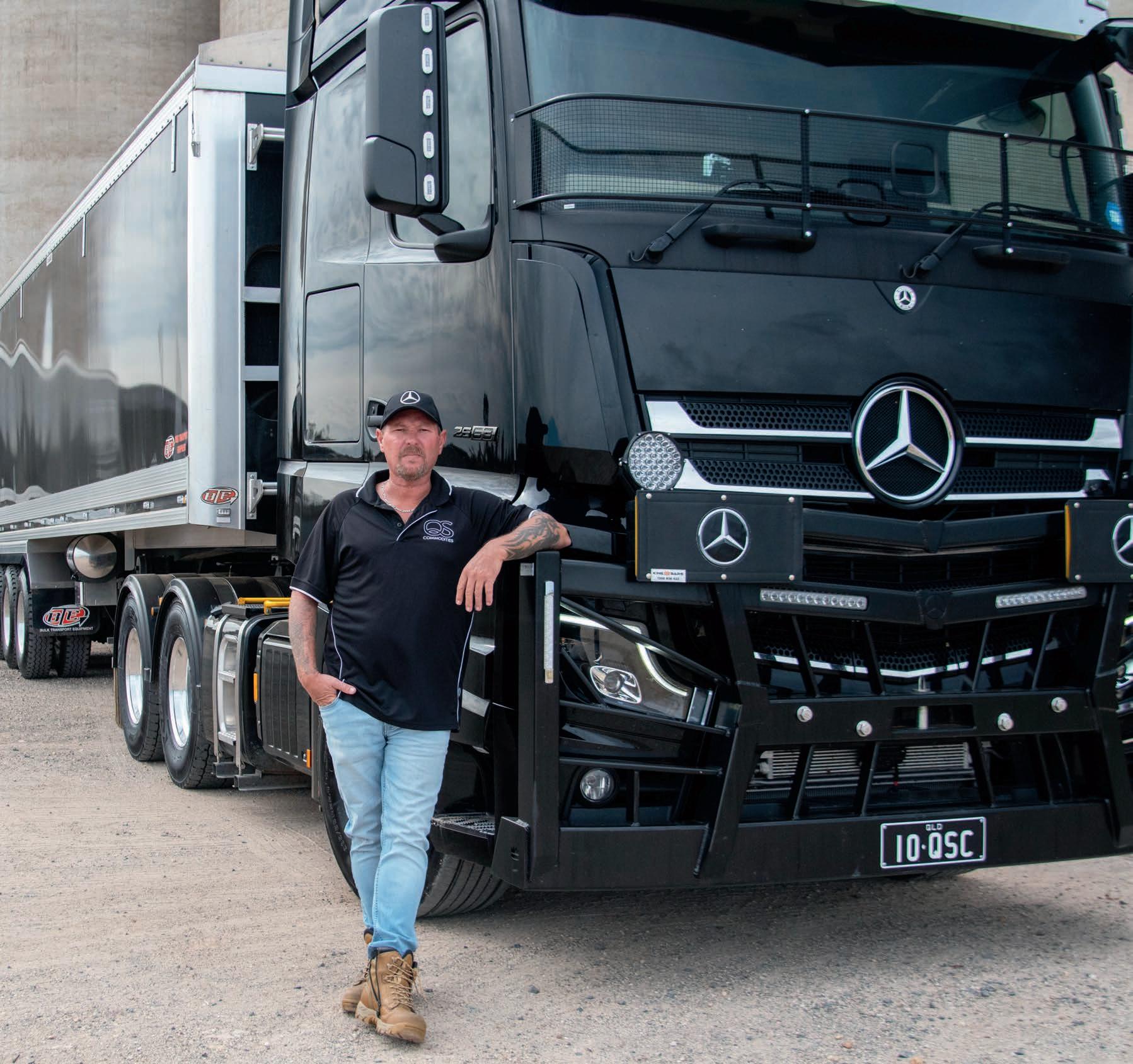








Above,
“We used to use a lot of subbies, but when the harvest was on we’d lose a heap of them,” Dave says.
So, one night over a few beers, Nick and Dave decided to buy their own trucks. They bought their first one in 2021 and since then they just kept getting more. By the time Dave came on board QS Commodities had seven units on the road and the eighth was just arriving.
Hands-on education
Nick had a less than ordinary route into the grain industry. Growing up on the Sunshine Coast, far from the nearest grain paddock, he had planned on becoming a lawyer. At 20 he took his first role in grain logistics with a multinational trading house. Now it has become a way of life.
to get them dirty. Here’s the Benz heading away to drop off a load of cotton seeds, ironically driving past a field of cotton!

Opposite bottom: With all the trucks being pretty much identical, the best way to tell them apart is the number plate
It wasn’t all spreadsheets and boardroom negotiations though. It was a very hands-on education. From the harvest sample stand and grain receivals to the office, Nick has played a role. Hence, when the decision was made to buy his own trucks the choice to deviate from the norm wasn’t taken lightly.
Nick has driven them and he definitely appreciates the classic Australian big-bonneted version. His business sense however steered him toward a partnership with one of the leading truck manufacturers in the world –Mercedes-Benz.
“The choice to go to Mercedes was pretty easy,” Dave says. “It’s about costs. We can put a Mercedes on the road for a lot cheaper than the likes of the Kenworths, and then on top of that we save a heap in fuel and servicing as well.”
Dave wasn’t kidding about the fuel savings either. “We’ve done the figures over the past couple of years running the Mercs and on average we’re saving $40,000 a year per truck. When you can save that kind of money on your biggest expense you can’t complain,” Dave says.
All the trucks are specced up identically with the exception of #10, the one you see before you. Courtesy of the team at Daimler trucks in Brisbane and as a special thank you for the time and investment QS Commodities has put into these trucks, #10 turned up with a custom Black Kings bull bar as well as black tanks all ’round, giving it just a little extra. Aside from those finishing touches on #10, Nick has kept all the trucks the same.
“They’re all 2663s and all fitted with the SoloStar interior. That has a full single bed that folds up and clips against the rear wall. When the bunk’s up it then has a lounge seat setup to it,” Dave says.
The trucks are all fitted with a sleeper air system, as well as a TV, microwave, dual fridges – the works.
“Our drivers are away Sunday to Friday, with some being away for a couple of weeks so we want them

to have everything they need. There’s no shortage of space in the Mercs. We’ve got a couple of drivers that are six-foot-five and they can still stand tall in the big cabs.”
Now we can address the big black elephant in the room. How are they holding up under the harshest Australian conditions? With Dave’s Kiwi roots you know he’s not going to mince words. He’ll call a spade a shovel if it is.
“We’ve had a few wee teething issues,” he admits. “The great thing though has been Daimler’s backup and service. If parts are wearing or breaking, they don’t muck around, they just throw new parts in.”
It seems the team at Daimler is just as invested as the QS Commodities’ team at seeing these trucks not just survive, but flourish in the grain carting came. As issues arise as a consequence of putting them into these conditions, Daimler is tracking and working with the QS team to find solutions.


“When I first drove one it really felt like it was wandering on the road,” Dave recalls. Between him and Daimler though they remedied that by replacing the front-end springs with Daimler’s heavy-duty springs. “We’ve done numbers one to four; five and six are getting done now and it’s made the world of difference.”
Obviously, the big Benz’s go up rather than out and as such their wheelbase is not the same as the big bonnets. “The downfall to the short wheelbase is they don’t have the flex to
Above: Daimler Trucks took it upon themselves to dress up QS Commodities’ 10th Mercedes-Benz, adding a little bit of blackness to the tanks and bull bar

Below: It may be dwarfed by the silos it works around but the Mercedes-Benz Actros 2663 is far from a small fish. Big cab, big power and huge torque

Opposite top: If you hang out around the Queensland back roads it’s a fair assumption that one of the stunning QS trucks will be around

Opposite bottom: King bars custom painted bull bar with mounted spotlights really sets the big Benz off
walk themselves out of sticky situations like the longer wheelbase trucks do, but it’s only happened a couple of times and we just use the farmer’s tractor,” Dave says. “The advantage though is we run under 30 metre PBS and can run into all major cities with them.” It’s very much a swings and roundabouts situation.
Dave’s happy to admit, teething issues aside, the Benz Actros is doing exactly what QS Commodities needs of them. Working closely with Daimler as well as the drivers, issues that crop up are easily handled. “We rely on the feedback from our drivers as well. The little bugs and teething problems are getting sorted as our drivers let us know. If you don’t know better, you don’t do better.”

This approach is ensuring that as new ones get ordered, the specifications can be altered to avoid previous hiccups.
That’s a good segue into the other big issue that needs to be addressed. How do the drivers feel about their big Euro workhorse? Well, that is an easier answer than I anticipated – “comfortable and content”.
Dave admits that there is usually a little bit of apprehension from some of the bonneted truck fans, however t hat is normally completely gone after their first week at work. The notable difference in the driver’s fatigue from doing thousands of kilometres in a quiet comfortable Mercedes-Benz Actros cab is notable. Dave points out the drivers are just more relaxed, less tired and with less aches and breaks. It all comes down to the ease of
driving the German giants.
“Fatigue is a big thing in our industry these days and driving these makes a huge difference. Our diehard American truck guys have easily been converted with the Mercs, they get to the end of the day and they are still feeling fresh and relaxed. That’s really important for fatigue management,” Dave says. “A lot of the other brands are built for Aussie conditions, but not for the driver.”
It also helps that the Mercs can pull harder than a busload of schoolboys as well. “It’s funny, you’ll come up behind one of the other grain trucks and start thinking I must be a bit light. Then you check the scales and are sitting around 90 tonnes, but the Mercs are just so quiet and so much torque, they do it with ease,” Dave states emphatically.
“They might drop off against an 18-speed for the first couple gear changes, but once they get into the real pull they are just out and gone.”
Whether it’s a change in mentality or just the word getting around about QS Commodities in general, Dave admits he is
now getting quite a few calls from drivers looking for work and he believes people are starting to appreciate the advantages that come with some of this European gear. Personally, after hearing the driver of the month and driver of the year program that QS Commodities has instigated, I do believe that may have something to do with the desire to don the QS logo. But the big spacious Mercedes-Benz Actros cab would be a hell of an enticement as well.
In the end, times are changing, and QS Commodities is a company that epitomises growth and change. It’s a well-established
grain trading company that has pivoted into carting its own products, from one truck to 10 now, working harder and smarter.
Nick Slipper may be the man at the top but he’s smart enough to know what he doesn’t know and has invested in the right people and the right products to ensure the company succeeds. Those investments include putting a Kiwi in charge (that’s never a bad thing). Plus, partnering up with one of the world’s leading innovative truck manufacturers.
Bring on more change if it’s all going to look as good as the QS Commodities Mercedes-Benz Actros.
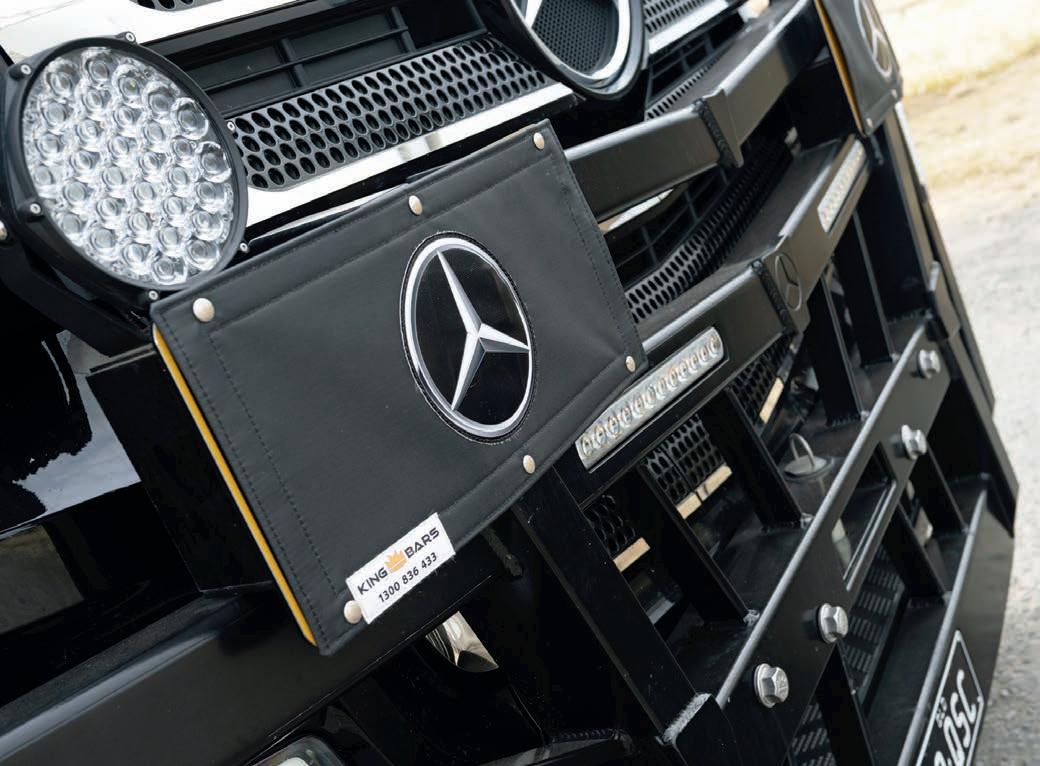

“We’ve got a couple of drivers that are six-footfive and they can still stand tall in the big cabs.”
It’s easy to think that the problems fronting our industry are unique to us in Australia. A quick look offshore underlines that we are truly part of a global economy where delivering on the freight task requires tackling the same hurdles. Last week I re-read a research paper prepared by The American Transportation Research Institute (ATRI) outlining the top concerns for the US industry in 2022.
Americans don’t do things by halves: ATRI canvasses 25,000 stakeholders and 50 state trucking associations to ask about the top issues each year. The research distils to about 4,200 responses – and ATRI says that’s a record number.
Not surprisingly in the wake of the Ukraine War, fuel prices are the top issue for operators in the USA.
After reigning as the top industry issue for five successive years, driver shortages dropped one position this year to the second-highest topic.

The lack of available truck parking rose one spot to become the thirdranked issue, followed by driver compensation. And the state of the
NatRoad undertakes research from time to time. Most recently, we commissioned an independent economist to examine industry trends and concerns, throwing light on the things operators can do to remain viable.
NatRoad knows from its rather more modest research that fuel prices are biting. They’re the topic on every driver’s lips at every rest stop or roadside diner.
Slightly more than half of US operators think America can do more about pricing by expanding local refinery capacity, drilling for more oil or manipulating the national Strategic Petroleum Reserve.
Here, we don’t do refineries much these days. You’d risk being lynched by inner-city Greens voters if you said we should be doing a Jed Clampett and uncovering a new oil source in our backyard. And as for strategic reserves, we’re more about bringing our fuel
stockpile here and having it located on our shores.
About that driver shortage … according to the American Trucking Associations, the industry’s current shortage of over 80,000 truck drivers could grow to over 160,000 by 2030. As I said, Americans don’t do things by halves.

The ATRI report goes on to say: “There are a number of underlying factors contributing to the driver shortage including a retiring driver workforce, the challenging lifestyle and regulatory pressures leading some drivers to leave the industry.” Sound familiar?
It goes on: “Industry stakeholders believe there are multiple ways to reduce the shortage including lowering the legal driving age to 18, improving the driving lifestyle – by expanding truck parking and reducing detention at customer facilities – and recruiting more women to the profession.
“Data from the US Census Bureau shows that 30.3 per cent of the industry’s driver workforce is over 55 years of age.
“Faced with this aging workforce and the accompanying pace of driver retirements, 39.1 per cent of respondents believe the industry’s best strategy for reducing the driver shortage is to focus recruitment efforts on younger adults.”
They could be onto something.
For me, the most interesting stuff was the US advocacy for more truck rest stops.
According to the Federal Highway Administration, there are 313,000 truck parking spaces available nationally, which equates to just one truck parking space for every 11 drivers.
“The problem is particularly challenging in and around metropolitan areas where population densities create increased consumer demand for truck freight,” the report says.
“However, in a growing number of these areas, political pressure on local government – from residents who want the goods delivered by truck but do not want to provide parking for truckers –makes it more challenging to ease the regulatory burdens limiting construction of additional parking.”
“The [US] industry’s current shortage of over 80,000 truck drivers could grow to over 160,000 by 2030.”
NatRoad communications are intended to provide commentary and general information. They should not be relied upon as legal advice. Our advisers are available to clarify any questions you have and provide the right advice for your business and workforce. Contact NatRoad on (02) 6295 3000.




Over the past couple of years I’ve seen several cases of red light cameras incorrectly issuing fines to trucks. At first I’d hoped it was an isolated mistake but I’ve seen a new example pop up in the past few months.
I want to get word out to the transport industry – if you receive a red light fine while driving a truck, it’s worth checking before paying. It’s something I’ve written about before, but I think it’s worth raising again because the problem keeps happening.
The issue is that long vehicles can confuse the red light cameras.
The cameras are programmed to take a photograph if the front wheels of a vehicle travel over the stop line or enter the intersection after the light turns red. The camera should not take a photo if the front wheels are already in the
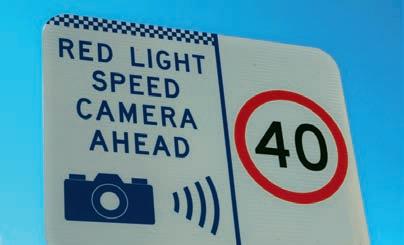







SARAH MARINOVIC is a principal solicitor at Ainsley Law – a firm dedicated to traffic and heavy vehicle law. She has focused on this expertise for over a decade, having started her career prosecuting for the RMS, and then using that experience as a defence lawyer helping professional drivers and truck owners. For more information email Sarah at sarah@ainsleylaw. com.au or phone 0416 224 601

intersection when the lights change. However, it seems that red light cameras can be confused by long vehicles with multiple axle groups. In the cases I’ve seen, the first axle of the truck is well into the intersection when the light turns red. But as the final two axle groups pass over the trigger, the camera mistakenly thinks a new vehicle has entered the intersection against the red light. There are meant to be safeguards
to stop fines being wrongly issued. Revenue NSW says that all photographs are reviewed before a fine is issued. However, these measures aren’t always working. Fines are still being incorrectly issued to trucks.


As a result of these errors truck drivers are not only paying large fines ($481) but also receiving three demerit points for an offence they didn’t commit.

So what should you do when you receive a red light fine?


The first step is to view the photographs of the incident. You can download a copy through the Revenue NSW ‘My Penalty’ website and app.
If the photos suggest the camera has been triggered by the rear axles, then your next step is to request a review. One helpful thing to know when preparing your review is that red light cameras normally also capture a video of the incident. While you can’t usually access the video at this stage, it is useful to refer to it in the review application. Explain what you believe happened and ask that the video of the incident be reviewed.

In my experience we’re usually successful in having the fine withdrawn at this stage if the camera has malfunctioned.

However, if your review is rejected you might need to take the case to court. It’s a good idea to speak with a traffic lawyer before doing this as the legislation is quite technical and there are some risks involved.
As always, if you’d like some help my team at Ainsley Law are always happy to have a chat with OwnerDriver readers.











Driving for long periods of time involves a lot of sitting. Research has linked prolonged periods of sitting with a number of health conditions, including overweight, increased blood pressure, high blood glucose and high cholesterol levels. Too much sitting can also impact your mental health.
The good news is that there are many ways to make small sustainable changes to maximise your health and wellbeing. A good way to approach this is by setting short- and long-term goals.
With 2023 well underway, it is a great time to reassess your new year health goals. Whether your goal was to quit smoking, improve your eating habits, lose weight or become more physically active, it doesn’t always go to plan. Sometimes we get distracted and lose focus – and this impacts on our commitment to sticking to our goals.
Interestingly, a study by Oscarsson and colleagues (2020) found that people with approach-oriented goals were significantly more successful than those with avoidance-oriented goals (58.9 per cent vs. 47.1 per cent). That is, the people striving to reach or maintain a desired outcome were more likely to reach their goals than


those who were focused on avoiding or eliminating an undesired outcome. For example, “I will exercise to stay strong and fit” (approach-oriented) versus “I will exercise to avoid heart disease” (avoidance-oriented).
What did you set as your new year goal? Perhaps now is a good opportunity to reassess and think about what you really want to achieve.
It’s also important to plan for relapses, so what can you do when the energy and excitement of reaching your goals wears off?
Is your goal specific, measurable, achievable, realistic and time framed? If your goal is vague, you won’t know if you have reached it. For example, if your goal is “to lose weight”, try redefining your goal to something like “I want to lose 5kg in the next six
months”, then work out some strategies to help you achieve this.
Make sure you write your goal down and keep it where you see it regularly, perhaps somewhere in your truck.
What obstacles or barriers might pop up over the coming weeks and months?
Perhaps you anticipate that your sleep routine will be disrupted and that you will have limited access to healthy food choices while on the road. There might be fewer opportunities to move your body, and increased stress associated with driving for long periods.
Be thoughtful about what you want to achieve but realistic about potential hurdles. Preparation is key to success so it’s always helpful to plan ahead and make changes as appropriate. Just like you would with planning your road trips around weather events and road closures.
Recruit your friends, family, and colleagues to help support you towards reaching your goal. This might include someone at home assisting you with meal preparation or joining you as your workout or walking buddy. Maybe you could even check in with someone at your truck stops. This helps with accountability and can increase motivation for making and sustaining lifestyle changes.
You never know, your drive to make positive changes to your own health might spark the motivation in one of your colleagues to do the same.
Write it down! If you’re striving to lose weight, write down what you ate, document how much exercise you do, and weigh in each month to track your progress. It’s a great visual to see all the hard work that you’ve done! Not only that, but it will provide some insight into what’s working and what isn’t.
Think of it as your health logbook, just like your driving logbook.
You might be working towards achieving several health goals but perhaps you need to focus on the most important goal first. This could be the goal that will have the greatest impact on your health and wellbeing and likely have a positive impact on other areas of your life. This could be simply breaking up long periods of driving with some gentle stretches or range of movement exercises. Or you might pack your own meals and snacks for the drive ahead, to avoid eating convenience-type foods.
Making lifestyle changes is not easy, because it’s different and it’s a change to your routine. Embracing change means you want to try new things, be adventurous, or improve yourself. If you miss a day of walking or eat something you were trying to avoid, don’t beat yourself up, just start again tomorrow.
“Think of it as your health logbook, just like your driving logbook.”
If there’s one thing transport workers and heavy vehicle drivers need to know about it’s tax deduction claims for business expenses. It’s important that heavy vehicle drivers understand the many types of expenses they can claim when completing their tax returns. Anything used for their work, such as meals and uniforms for example, can be claimed if there is documentation.
Mark Chapman, director of Tax Communication at H&R Block says this time of year is very important for business owners.
“As we get to the end of the financial year its important sole traders do everything, they can to get their records in order.
“It’s also a great time to undertake some future tax planning,” he explains.

Chapman is quick to point out the importance of understanding business expenses.
“The cost of uniforms, meals while on the road and even sunglasses that need to be worn while driving can be claimed as a tax deductable work expense. Provided you have substantiation and are not being reimbursed by someone else for the expenses.”
Another key piece of information for this year’s end of financial year (EOFY) is the expiry of the temporary full expensing deduction.
Chapman says the deduction allows a business owner to claim an immediate deduction for any eligible capital asset, this can include the cost of trucks, IT equipment, tools and other items.
“This deduction is really valuable for business owners at the moment however it is about to disappear,” he warns.
Chapman also says for any operators with spare cash might
want to consider making a voluntary super contribution as they’ll be able to deduct that contribution from their tax return.
“You can contribute up to $27,500 into super. Business owners can use this opportunity to boost their retirement and ease their tax bill too,” Chapman adds.
Tax returns are complicated documents, and they can be difficult to complete accurately.
The one piece of advice Chapman gives to sole traders and businesses owners planning on completing their own tax return, through the government myTax portal for example, is not to embellish their expense claims.
“Absolutely go ahead and claim anything you are entitled too but do not try to claim any more than that.
“Don’t try to claim more than you spent or claim things that are not strictly work related.
“Some expenses can be tricky to claim such as home internet use or mobile phones and this is where a tax agent can come in handy and help someone to figure out how to properly make these sorts of claims.”
Embellished deductions can result in a penalty/investigation from the Australian Taxation Office (ATO) and is not worth the risk. Chapman says it’s always best to simply stick to what you’re entitled to claim as the ATO is paying especially close attention to these types of deductions this year.
“If you can’t substantiate your expenses the ATO may reject those claims.
“The ATO is focusing very heavily, this year, on work-related expenses,” Chapman says.
Sole traders and business owners might want to re-consider completing their own tax returns in the first place though and weigh up whether it’s worth their time.
Hiring a professional tax agent to complete your tax return is a way one can aim to maximise their return. Chapman says the cost of having an agent complete your returns can easily pay for itself in a larger tax return. Not only this, but tax professionals are trained to be able to understand the tax laws and forms and help you to claim the deductions most appropriate to you.
“The cost of a tax agent can potentially be repaid several times over in additional deductions. Not to mention taking away the stress of trying to work through these forms yourself.
“Agents can read and understand the laws and can tell an employee which deductions are available to them,” Chapman says.
However, completing your tax is one thing, getting the correct documentation ready to begin with is another. Tax accountants can only help someone with their return if they have the right documents to work with.
“It is very important people have their records straight before they see their agent, otherwise they might not be able to claim all their deductions.
“Accounting software simply makes life easier for sole traders,” Chapman says.
When it comes to properly organising your documents Chapman says simple common-sense rules apply. This means having receipts and evidence for all appropriate business expenses organised chronologically ideally.
Chapman admits that they still do occasionally see clients show up with a shoebox full of paper, but for the most part digital documents are far more common nowadays.
Chapman says the deadlines for filing a tax return are very generous and someone would be particularly lax to miss them. However, if they were to miss the deadline then the ATO can impose a late fine of $270 for every month that it is not filed with a cap of five months, or $1,280.
If someone still doesn’t make a tax return, then the ATO is able to declare that year’s return null and will actually complete their own return by estimating a company’s revenue based on previous years. Chapman says this scenario rarely works out well for the business.
“While they are able to estimate revenue fairly accurately, what they cannot account for are businesses expenses and deductibles.”
Chapman says tax time needn’t be stressful and that it can be an opportunity to take stock of a business’s operations and figure out which direction it should be heading in for the second half of the year.
Finally, remember to tread carefully around deductions and only claim expenses you can back up with proper documentation.
Tax time can be a great opportunity to plan head and assess the current state of your business.
Julian Daw writes
The story of Allied Seafreight Logistics started in Victoria in 1994 when Bill O’Connor, who had immigrated to Australia from Ireland in 1980, decided it was time to start something new.

Bill’s dream continues to this day. When he retired in 2020, his daughter Janice O’Connor took over the reins, guiding the business into its recently celebrated 29th birthday.
Janice says her dad, Bill, was a truck driver in Ireland and built up his managerial skills for a company called Eurohaul, which was also a family business run by the Brannigans in Dublin. He took those skills and started to work for different companies in Australia, always in transport, predominantly container and 3PL logistics.
In 1994, Janice says her parents were in a position to start their own company, so they put their house up and decided there was a good opportunity to buy into an existing business which was part of a global company withdrawing from the international market. The opportunity allowed for management buyouts for the brave, so the O’Connor family bought 3PL and the container transport business and the remainder of the business was split up.
Janice started with the new company and studied to earn her degrees in business, sales and marketing. She joined at the beginning. At 25 she thought she wanted a change in career, this was the opportunity!
She started with the company in sales and then learned the business from the sales and operations perspective and says that working for her father in the transport industry, in a time that was heavily male dominated, was both challenging and a baptism by fire.
Janice says she had to work twice as hard, not only because she was a woman, but because she was seen as the daughter as well, so the nepotism
card was in place. Despite that, she says she loved the opportunity to learn from her Dad and his years of experience.
When asked if she still loves the industry, Janice was emphatic.
“Absolutely love it, my parents retired from the business just pre-COVID. Every day is a challenge. Particularly the last couple of years, the pressures that have been seen in the supply chain.
“I don’t think we’ll ever see it again, but it’s been phenomenal that the economy can change on the turn of a coin, and you must be prepared and react accordingly – be able to scale up and scale back just as quickly. The last three years have been a huge learning experience, so it’s been amazing. I love it; it never surprises me but it always surprises me.
“It’s a great industry. Australia is a distribution centre – just so dependent on transport and logistics.
“This is an industry that’s not going anywhere, and we need good people. It is a great career choice and it’s very challenging; but equally very rewarding and there’s so many different things and aspects of it that you can go to and learn,” Janice says.
“We are a growth industry, and (we are) going to need attract more people. It’s important that we not only encourage new people on board, but we need to invest in the ones we have.”
Janice is adamant that you must be prepared to put the training into people and anyone who has a good customer service background or good data entry skills, can use those across any industry. She says it is basically having the faith in your own systems and being able to train and adapt those external skills into transport logistics.
“If we can’t do that and we keep waiting for
The foundations for Allied Seafreight were laid in Ireland when a young Bill O’Connor started truck driving to earn a living. Jacquelene Brotherton caught up with the transport operation’s current managing director Janice O’Connor for an episode of the Long-Haul Legends Podcast
people to be experienced we’re not going to grow.
“Attitude and the willingness to learn are paramount, and if we have that perspective then we can teach the rest. I think it’s all about the attitude and our acceptance of other’s prior experience.
“In the current labour crisis, it is unrealistic to wait for experienced people to become available.
“No matter who you bring on board, trained or unskilled, you still must train them in your own processes and your culture, so there is always an element of training.

“If you’ve got someone that’s prepared to work and work hard, to learn, then you can train them and that is going to reward you ten times over.”
Janice says getting your team invested in training new people is critical.
“If you encourage your team and say ‘look you really need to show your skills, you’re so good at what you do, if you embrace these young people, and show them what you know, you’re leaving your legacy’ – but then when they do that, you must show them how appreciated their skills are, that are being handed down.
“Everyone forgets what it was like when they started. Everyone forgets that at one time they were the newbie, or they were the unskilled person. I think that everyone needs to feel valued, and they must remember that someone took time to train them.

“We are in an ageing industry, especially our owner-drivers. Unless we make it a more attractive and rewarding industry for younger people, men and women, to come into this space we will be looking for those autonomous vehicles a lot quicker than we think.”

Janice’s advice is to stay true to your core values and create a great culture – a process she says has been very important to Allied Seafreight. She says it is what sets them aside from competitors and why they have grown the business on that service standard.
Janice mentioned that after facing a couple of crises of conscience lately, the process has reinforced the importance of staying on that path.
She says that even in the current climate there is still a lot of space for loyalty, despite what that might bring – but if you if you stick to those core values, growth and happiness will come from that. On the flipside, if you compromise your integrity and lose your reputation because of that, you’re never going to get it back.
Allied Seafreight believes in long term partnerships with their clients, built on service excellence and seamless integration. Sticking to its core values has helped the business to grow from strength to strength, backed by a dedicated staff who are proud of where they work. Such pride is a great reflection on both the company’s values, and the quality of the leader!


Above:


As





“Everyone forgets that at one time they were the newbie.”




It’s only a couple of months before what is arguably the largest truck show in northern NSW takes place – the Casino Truck Show.

The 2023 Casino Truck Show will be held in the Casino CBD on Saturday, August 5.
Celebrating its 10th year, and with today being just 100 days away from getting up close to those who carry our great nation, organisers are busily setting the scene for what is shaping up to be the best-ever North Coast Petroleum Casino Truck Show.

According to Richmond Valley Council’s director service delivery, Angela Jones, last year’s Casino Truck Show was the biggest yet with an estimated 8000 people attending, and the expectation was more entries and more people would attend this year.
Jones says surviving 10 years as a regional event was no small feat – even more impressive when you throw a global pandemic into the fray.
However, she says that’s exactly what the Casino Truck Show was celebrating – an entire decade of showcasing an industry which kept the country moving.
“We couldn’t be prouder to host such a dynamic event, which over the past
ALEXANDRA TRUCK UTE & ROD SHOW
June 11, 2023. Alexandra, Victoria
Celebrating the 26th year of the Alexandra Truck, Ute & Rod Show on the Queens Birthday long weekend in June, 2023. Sunday Show ‘n Shine on Alexandra’s main street, includes live music, Victorian woodchop tournament, exhibitions and trade displays, kids amusements and Truck Show Day raffle draw. Be early on Saturday for the local markets, convoy and truck driver’s memorial service at 2pm and sponsors’ dinner at 6pm.
For truck show details email trucks@alexandratruckshow.com.au, or for further info phone Gordon Simpson on 0409 577 212, Andrew Embling on 0418 266 038, Facebook page or see the website at www.alexandratruckshow.com.au
WAUCHOPE YESTERYEAR TRUCK & MACHINERY SHOW
July 8 & 9, 2023. Wauchope Showground, NSW
Featuring historic and late model working trucks, vintage cars and tractors, machinery, motorcycles and stationary engines. Plus market stalls, swap meet and family entertainment. Free entry for exhibitors. $10 weekend camping. Saturday night fully catered meal and unreserved auction with proceeds to charity.
For info phone Greg and Christine Cavanagh on 0400 366 422. The truck exhibition inquiries phone Kirby Maxwell on 0407 594 149 or see the Yesteryear Truck and Machinery Show Facebook page www.facebook.com/groups/1671228919932231
CASINO TRUCK SHOW
10 years has opened up our beautiful town and the Richmond Valley to the rest of Australia,” Jones says.
“Since its inception in 2011 – we lost two years to COVID-19 – the Casino Truck Show has developed a reputation as the greatest truck show in the southern hemisphere.
“We are delighted to again welcome North Coast Petroleum as naming rights sponsor and are thankful for the support and encouragement of the many other sponsors who have come on board this year.
“As a community which is passionate about its transport industry, we welcome all and sundry to Casino on Saturday, the 5th of August.”
Entertainment this year includes the Country Mud Band, AirtimeFMX, and the Wildlife Twins. As well, there will be plenty of kid-friendly activities such as amusements rides and face painting. There will also be exhibitors showcasing industry-related products and services, food vans and market stallholders.
Online registrations and market stall applications opened on June 1. More information can be obtained from the Casino Truck Show’s Facebook page and its website.
August 5, 2023. Casino, NSW
Show sponsored by North Coast Petroleum. The Highway Lights Parade will roll through Johnston and Centre Sts from 10am on Saturday. Truck registrations ($30 each) from 6am at the Casino Industrial Area on the town’s east side. Includes live music, amusements and markets. Over $12,000 in cash and prizes. Presentation at 2pm. Plus plenty of blinged up trucks from all across Australia will be parked in the CBD. Bobtail and rigid trucks only. For further info email info@casinotruckshow.com.au or Darren Goodwin at dtgoodwin1@yahoo.com.au and see the website at www.casinotruckshow.com.au and Facebook www.facebook.com/casinotruckshow
AUSTRALIAN FESTIVAL OF TRANSPORT
August 24 to 27, 2023. Alice Springs, NT
The National Transport Historical Society and The Old Ghan Historical Society has the announced that the ‘Festival of Transport’ will now extend to four days. Along with the regular reunion activities, including Cummins Race Day and Shell Rimula Induction Ceremony, other events include Welcome Drinks on August 24 at 6pm, Transport Women Breakfast and Red Ball in the Kenworth Pavilion, and a museum open day on August 27 including mini train rides.
For more information and nomination forms see the website at www.roadtransporthall. com, Facebook page at www.facebook.com/Trucks.n.Trains, email info@ roadtransporthall.com or phone 08 8952 7161.
September 27 to 29, 2023. Gold Coast, Queensland
The National Road Transport Association (NatRoad) is pleased to invite members to the NatRoad National Conference 2023, to be held at the RACV Royal Pines Resort, Benowna on Queensland’s Gold Coast from September 27 to 29. Includes the ‘NatRoad Parliament’ and the NatRoad Awards presented at the Gala Dinner.
For further info see the website at www.natroad.com.au or the Facebook page at www.facebook.com/natroadaustralia
September 30 & October 1, 2023. Gatton, Queensland
The 2023 Lights on the Hill Memorial Convoy is planned to be held on October 1 en route to Gatton Showgrounds with the Memorial service to be held on October 2 at the Lake Apex Memorial wall. Includes live music, food and drink stalls.
For further information go to the Lights On The Hill website or see the Facebook page.
To have an event listed free, phone 0408 780 302 or e-mail greg.bush@primecreative.com.au
At the dawn service at my local Anzac remembrance, the master of ceremonies commented on being proud of our service people, both current and past, and went on to suggest we should conduct ourselves in a manner that would make those who have gone before us proud. In so many ways it’s a forlorn hope.
I’ve been contacted by Paul who read the article in which I commented on the size of penalties awarded against those of us in road transport who have sinned against road transport law.
Some couple of years ago there was debate – principally originating from Victoria I think – where there was concern regarding truckies doing what was termed ‘nose to tail shifts’. Essentially it concerned drivers doing a 12/14-hour shift, having the mandated seven-hour break and then taking off again. The reality of that situation is that if one has taken the minimum short rest breaks, the rule of maximum of 12/14 hours in a 24 period would come into play. The debate was instigated by enforcement people concerned that such drivers would be fatigued. All this goes to prove is that it is not only drivers of trucks who can be unaware of the complexities of road transport regulations.

Paul was one who undertook a nose to tail operation way back in January 2022. And that, folks, is considerably more than 12 months ago. It took over 12 months to issue a penalty to Paul. But talk about prejudice against people in this industry by eastern states bureaucracy. That action of Paul’s would be quite legal in Western Australia (read: considered safe) where he was operating to and from. But get this, the fine is not only four demerit points but a whopping $17,240! Alcohol-impaired drivers never get those financial penalties. And the other thing, Paul said nothing about any chain of responsibility action. Is this just another case of bureaucrats picking low hanging fruit? Previously Dan has raised the issue of enforcement backing off its responsibility to go up the ladder chasing up chain of responsibility actions.
On top of that insult, we’ve got an organisation called the National Transport Commission that has been given the responsibility of reviewing eastern states’ heavy vehicle regulation. It’s been carrying that obligation for years with no visible outcome - beyond
the hairbrained suggestion that the legal maximum hours be reduced. Talk about a limited connect between renumeration and productivity.
Still on bureaucracy. Graeme, whose extremely responsible business is being severely downsized, is reported making a statement that goes as per quote, “Compliance has done nothing for this industry – the National Heavy Vehicle Regulator (NHVR) is the greatest debacle I’ve ever come across”.

The NHVR seems determined to reinvent the wheel in its pursuit of alternative fatigue management proposals. This economy has been undermined by the excessive cost of doing business. But instead of pursuing a level playing field, bureaucracy is being allowed to continue with programs that allow some sections of business via chequebook diplomacy to gain competitive advantage over less affluent opposition. Secondly, it allows bureaucracy to maintain its status quo.
As my mate Rod from across the ditch exclaims, the majors will mop up the slack with imported labour.
KEN WILKIE has been an owner-driver since 1974, after first getting behind the wheel at 11. He’s on his eighth truck, and is a long-time Owner//Driver contributor. He covers Rockhampton to Adelaide and any point in between. His current ambition is to see the world, and to see more respect for the nation’s truckies. Contact Ken at ken@rwstransport.com.au
Tailgating – a difficult problem to resolve as it is so often in the eye of the beholder, but not always. Definitely tailgating – the heavy vehicle going south through road works on the southern Gold Coast. Speed limit 60km/h and traffic flowing at that. A light vehicle following a heavy. A second heavy was so close to the back of the light vehicle that the light vehicle took ill-considered evasive reaction into the second lane coming very close to collision with a truck in the adjacent lane. The industry is in enough trouble with reputation without this sort of bullying.
Here’s a different story. It’s night in wet country Victoria and a heavy vehicle gradually closes on a sedan. The sedan’s incompetent driver attempted courtesy by slowing, or was its driver intimidated simply by having the heavy behind? All good, except that overtaking for the heavy was not safe. The slowing process continued for some 10km before changing of routes in a country town resolved the situation. I also consider that so-called road safety experts’ regular advice to simply slow down has an impact on real tailgating. There needs to be an attempt to educate about the road safety impact of friction in traffic flow.
Ah Peter, I’m convinced that your wish that we conduct ourselves in a manner that would make our forebears proud is something of a forlorn wish. My recommended reading this month: Australia’s Secret Army by Michael Vetch. It is the story of Australia’s coast watchers. We’ve certainly had our heroes, but we’ve also had our share of ‘drips under pressure’. They haven’t all been from the grass roots establishment and they’re not all from the grass roots brigade now either.
“Alcohol-impaired drivers never get those financial penalties.”
The Australian haulage industry is vital to the country’s economy, providing essential transport services for businesses across various industries. The industry has undergone a significant transformation, adopting new technologies and innovations to improve efficiency and cost-effectiveness. One such innovation is haulage marketplaces, which have gained popularity in recent years due to their many benefits for businesses.
Loadlink is an Australian haulage marketplace that connects shippers and carriers online, allowing them to exchange goods and services efficiently and transparently.

“Loadlink was created because we wanted to make finding freight and listing loads easier and more streamlined than ever before,” the company says.
Technology adoption has the potential to transform the industry by improving operational efficiency and reducing costs. One such feature introduced by Loadlink is Loadlink’s load matching algorithm that can connect shippers and carriers automatically online.
Another exciting feature is the carrier profile page, where carriers can create an online profile showcasing their transport business. They can also store truck types and configurations for easy load matching and future repeat business.
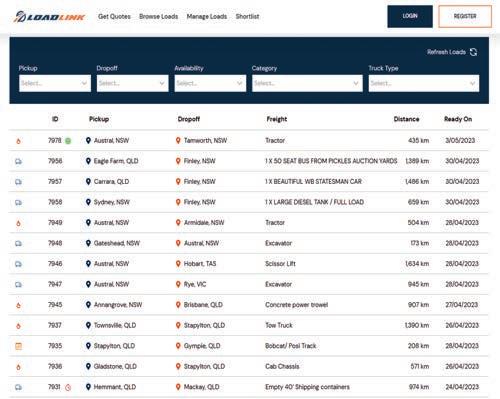
Loadlink is not just a load listing platform to help clients find freight, it is an integrated system that allows operators to also list their truck, then Loadlink’s clever system automatically matches the truck with listed freight. It’s just like a dating app for trucks!
We also have many other new and exciting features we are building in the background which we will launch in the coming months. The Australian Haulage Industry has rapidly embraced new technologies to improve its operational efficiency and competitiveness. With advancements in digital technology, automation, and data analytics, the industry is transforming to meet the increasing demands of customers for faster, safer, and more cost-effective freight delivery.
By using Loadlink, businesses can gain a range of benefits, including:





• Loadlink can help businesses save money by enabling them to compare prices and choose the most cost-effective carrier for their shipments. The marketplace can also help businesses find carriers with spare capacity willing to offer discounts to fill their trucks
• Enable carriers to maximise their return by filling empty space on their truck or by obtaining backload freight to get them to their next major pick-up point
• We can help businesses optimise their logistical procedures by accessing a wide selection of carriers, comparing prices, and controlling their shipments from a single platform. Time is saved, and the hassle of keeping track of various pages and shipments is lessened, thanks to Loadlink
• Loadlink enables businesses to access a wider content of carriers, including local carriers, regional carriers and national carriers. This can help businesses find carriers best suited to their needs and offer the most cost-effective and efficient services
TOP: Loadlink’s home page

ABOVE: The online Load Board – to browse for listings
• Using Loadlink can give businesses greater logistics operations flexibility. They can choose from various carriers, manage their shipments in real-time, and adjust their logistics strategies.
Loadlink was created by Australian transport operators for the Australian transport industry, pooling over 50 years of transport and logistics experience into one simple online platform.
Since our launch in January this year Loadlink has already accumulated over 250 registered users with new businesses joining the Loadlink family every day.
Moving across Australia has never been easier for carriers and shippers, thanks to Loadlink – the Australian haulage marketplace.
“IT’S JUST LIKE A DATING APP FOR TRUCKS!”































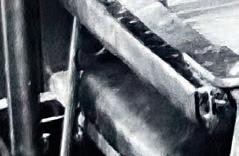















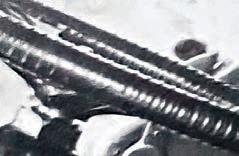






































Sleeper cabs are, of course, a critical component of any long distance haulage operation and the plain fact is that without a decent bunk, attracting experienced drivers in an age of driver shortages can be a whole heap harder. Yet like most other aspects of truck development, sleepers have undergone their own remarkable evolution as this light-hearted limp into the past reveals. Steve Brooks writes, but taps his UK mate Brian Weatherley for a fascinating history lesson



Some years back, I was involved in a TV and YouTube video about two trucks on a trip along parts of the old Hume Highway. Simply titled ‘Highway 31’, the exercise was the brainchild of Matt Wood, now a converted corporate man with Volvo Group Australia but back then, a bloke keen as curry to sample life behind the wheel of one of yesterday’s big bangers.
No question, Woody’s a capable hand at the wheel but he’d long wanted to sample the truckin’ life he missed as a boy. Or as he put it, “live the trucking youth I never had” with a snapshot of the so-called good ol’ days, even if just for a day or two.
























Capturing the passage of trucks and linehaul trucking in general, and separated by more than 40 years of










Opposite top: Like something out of a gulag, this sleeper compartment is believed to be in a Sentinel steam wagon around 1929


Top: Among other things, our video report on a 1975 White 4000 and new Western Star 4900 highlighted the passage of time in truck and sleeper development


Above: Kenworth’s first sleeper appeared on the US west coast in the early 1930s



Below: By the late 1930s, a sleeper addition from a German bodybuilder was available on a Mercedes-Benz LZ 10000 model

engineering evolution, the two trucks featuring in the exercise were a remarkably wellpreserved 1975 White 4000 and its modern-day descendant, a new Western Star 4900.

Typical for its time, and the absolute star of the story, the White was punched by one of Detroit Diesel’s famous screamin’ demons, an 8V71 stirring through a 15-speed overdrive Roadranger. Just as typical, you could hear it coming a mile off, the twin stacks belched soot almost every inch of the way, and Woody’s left arm had never been busier while his right ear rang like a car alarm. Still, and despite his obvious delight at briefly delving into yesteryear, I’m sure the thought of driving the ol’ cracker each and every day probably didn’t climb high on his wish list. A few days was more than enough.
Meantime, from where I sat, the workload was lightyears easier, smoother, quieter and no doubt safer as the 4900 Star with its DD15 engine, automated 18-speed box and superb steering and road manners made driving a genuine delight compared to the veteran workhorse.
Yet it wasn’t just time behind the wheel which so starkly separated the old from the new. In fact, from a long haul driver’s perspective, the sleepers of the two trucks were arguably as indicative as anything else of the evolution in truck design and driver comfort which has

Above: With an extended cab built by bodybuilder Wackenhut, 1955 saw the option of two beds in Mercedes-Benz’s LP315 cabover. The bodies in the bunks look like they’re headed for the morgue

Top right: Bolted on ‘swallow’s nest’ sleeper on a German Henschel in the 1950s. Photo courtesy of Rich Steiner ; Another bolt-on ‘swallow’s nest’, this time on a 1955 MAN
Above right: Cab-overs are no longer offered in the US but with more liberal length laws than their continental counterparts, bigger bunks were always available
Opposite bottom: In 1965, Mercedes-Benz offered its first integrated sleeper with the launch of the LP 1620 model


taken place over the past half century and more.
Like, Western Star’s Stratosphere stand-up sleeper is spacious and superbly appointed, and still easily among the best in the business. On the other hand, while the ‘dog box’ on the back of the White was good for its day and entirely typical of yesterday’s conventional big bangers, the modern-day mind boggled at the thought of shoehorning one’s self through the slot in the back of the cab, let alone imagining the difficulties of entry and extraction for a driver of, let’s say, more generous dimensions.
Indeed, it was around this point in the ‘Highway 31’ exercise that memory raced back to much earlier experiences in iconic trucks like the R-model Mack, W-model Kenworth and White Road Boss, most with sleeper boxes proving that when you’re tired enough, any bunk is better than no bunk. Then again, older timers will tell stories of a pillow on the steering wheel being a far better option than being dead-tired, if you get the picture.
Gratefully though, sleepers and attitudes to driver fatigue have come a long, long way, and they needed to, particularly given the vast distances and demands of linehaul trucking in our part of the world. But that said, some of the advances in sleeper design and space have been a surprisingly long time in the making, especially among European cab-overs and ironically, it was another Woody-inspired exercise which brought that point home with blunt clarity.
Sometime before ‘Highway 31’, we’d combined on a highly detailed production called ‘Clash of the Titans’ which ran two equally loaded B-doubles head-to-head;
a 600hp Cummins-powered Kenworth K200 and a Volvo FH16 600. Long story short, the K200 had the exceptional space and appointments of a 2.8 metre ‘Big Cab’ sleeper whereas the FH had Volvo’s standard XL cab with what can only be described as a modest bunk berth.

Sleeping in the trucks each night on the linehaul triangle from Melbourne to Sydney, Brisbane and back to Melbourne down the Newell Highway, and daily swapping trailer sets and drivers from one truck to the other, it seemed like punishment when it came time to overnight in the Volvo bunk. While performance and fuel efficiency of the two brands were almost identical, the Volvo sleeper was notably deficient compared to the Kenworth.
However, in 2019 and after years of complaints about the FH’s mediocre sleeper, Volvo finally reintroduced its extended XXL Globetrotter cab and after sleeping in an FH 700 for a few nights on a roadtrain run from Brisbane to Darwin, it was easy to conclude that Volvo now had the best sleeper of all the continental cab-overs.
Meantime, and despite an increasingly appealing model range, the other Swedish brand was copping its fair share of flak for what some saw as a negligible sleeper for the Australian market. As we can now confirm though, Scania’s premium R-series range is offering its new and significantly enlarged CR23 cab specifically for markets such as Australia.
Moreover, after recently spending a night in Scania’s bigger cab on an interstate trip, there’s no question each of the Swedish brands can rightfully claim the best bunks of all the continental cab-overs. Just whose is the best, well, that’s something of a dud question: the
“When you’re tired enough, any bunk is better than no bunk.”
Above & Below: Bigger bunks haven’t always been the sole preserve of Yank brands. Scania’s Longline was a revolution for Europe but bureaucratic intransigence buried it
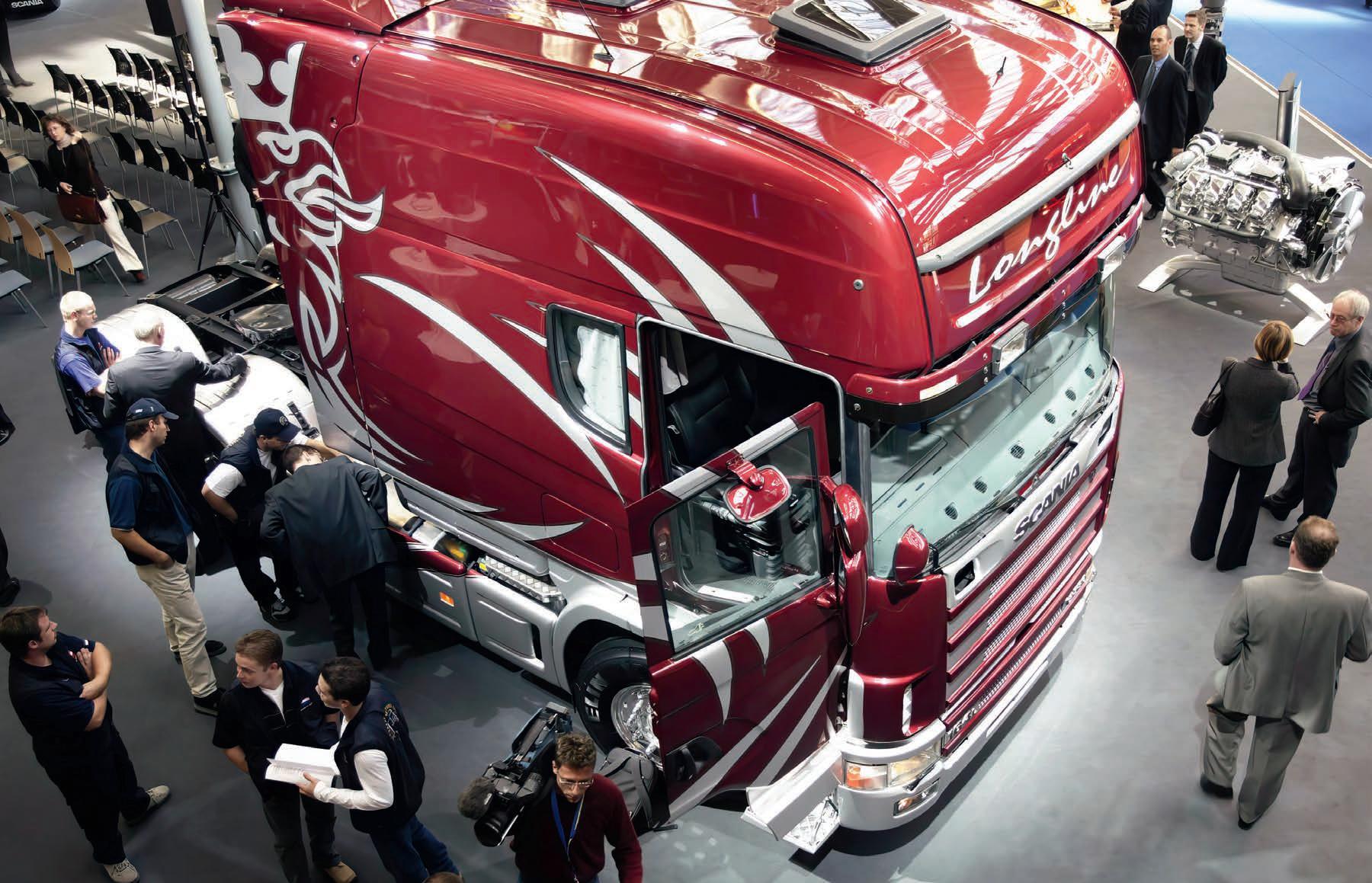
Opposite from top: For Pete’s sake. A typical US linehauler comes with a generous sleeper section; In the 1960s, Volvo’s F88 set a new standard in sleepers for European and UK drivers. Its popularity for longhaul work was immense; ‘Clash of the Titans’ pitted Kenworth K200 head-to-head with Volvo FH16. Performance and efficiency were similar but Volvo’s sleeper left much to be desired

“Sleepers able to meet the complex requirements of length regulations and driver demands across vastly different international markets have long been a difficult issue.”
simple fact is that Volvo and Scania now have bunks better suited to the Australian market than ever before, and it’s for their continental competitors to decide if or when they want to catch up.
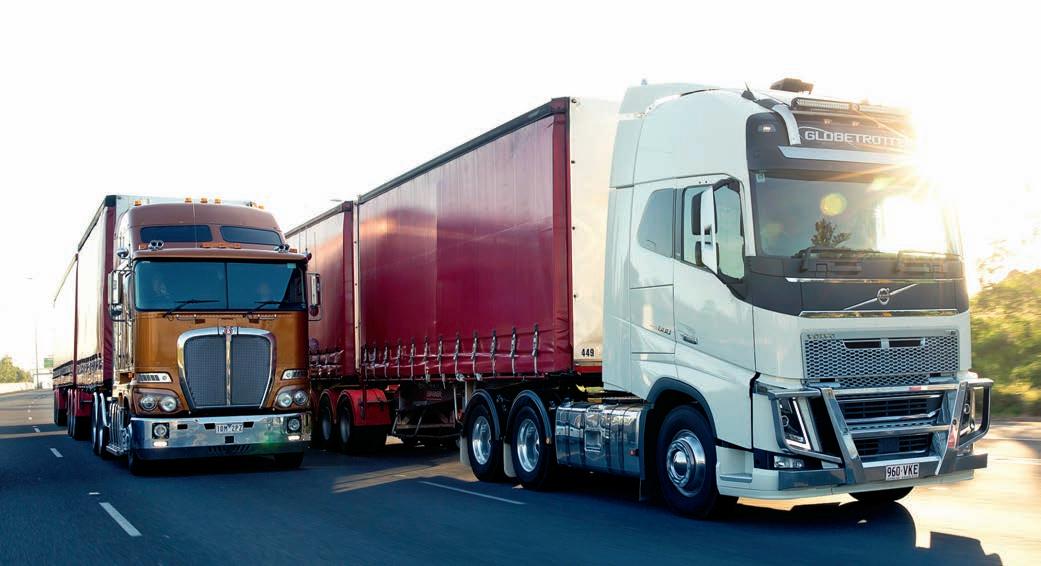
Whatever, sleepers able to meet the complex requirements of length regulations and driver demands across vastly different international markets have long been a difficult issue. It is, however, more of a problem for European cab-overs contesting low volume, high demand markets such as Australia than their US counterparts where conventionals rule. Indeed, with the relatively recent demise of Freightliner Argosy, the only remnant of North American cab-overs for linehaul trucking is Kenworth’s classic K-series, built solely by Paccar Australia and well-equipped with various sleeper options.
As for bonneted trucks in our part of the world, length limits preclude the use of the cavernous sleepers available in the US but even so, there’s still a wide range of roomy, wellappointed, factory-built sleeper cabs to choose from.
On both sides of the Atlantic though, the history of sleeper cab development is a fascinating tale of innovation and invention, and perhaps nobody has told the story more completely than highly regarded UK commercial vehicle reporter, Brian Weatherley. Writing a few years back in Great Britain’s esteemed trucking publication, Commercial Motor, Brian’s prime focus was understandably on the continental cab-over class where sleeper designs have ranged from the rudimentary to the radical.
What follows is an edited version of his original report but cab-over or conventional, we can all be grateful that sleepers have progressed far beyond the dreamtime.
So who built the first sleeper cab? The only thing we know for sure is they started to appear in the late 1920s, perhaps first in the UK where a 1928 draughtsman’s drawing shows a Foden Wagon cab with sleeping bunks. The following year, Mack introduced a sleeper section on its BJ model.
Then in the 1930s sleeper cabs started appearing in greater numbers, especially in the US. As trucks became more reliable they began traveling beyond the point where they could return home every night, thus the demand for a sleeper cab was guaranteed.
Early examples included General Motors’ T-51 tractor from 1931 while two years later, Kenworth’s first sleeper appeared on the west coast.

However, most of those early US sleepers were created not by the chassis manufacturers, but local bodybuilders. In fact, right up to the 1960s, thousands of sleeper cab and sleeper box conversions for both bonneted and cab-over trucks were produced by countless independent coachbuilders scattered throughout mainland USA.

Meanwhile, shorter distances within UK road haulage along with the still-strong presence of the railways in longhaul freight meant demand for sleepers was smaller.
It was a different story on the continent. By the late 1930s you could buy an extended sleeper on a Mercedes-Benz LZ 10000 bonneted truck, though like their US counterparts, early German sleeper cabs were built by independent coachbuilders.
Then, with the war years interrupting road transport in Europe, it was left to the Americans to refine the breed in the 1940s but with the world slowly returning to normal, it was possible by the early 1950s to buy a
bonneted MAN with a bed and an ‘improved sleeping position’. In 1953 MAN came up with another overnight innovation – a small sleeping compartment that stuck out of the top rear wall of a day cab. Known as a ‘swallow’s nest’, the concept wasn’t confined to MAN and pictures of other 1950s German trucks including Henschel, show them sporting the ‘swallow’s nest’ design.

Among the continental manufacturers, the Germans continued to set the pace. In 1955 Mercedes launched its first-ever factory-built cab-over, the LP315 which could be ordered with a sleeper cab containing not one, but two beds, courtesy of independent coachbuilder Wackenhut.
The curvaceous LP315 cab had seating for four, with a brochure explaining, ‘During breaks or at night, the rear seats can easily be converted into two comfortable beds’.
Across the border in the Netherlands, 1957 saw DAF’s distinctive 2000-series cab-over appear with a factorybuilt sleeper cab, and the basic layout carried over to the 2600 model launched in 1962.

The Brits, however, were lagging behind for numerous reasons. For thousands of UK drivers, a night out meant bedding down in one of the many traditional transport depots or ‘bed & breakfast’ houses across the land, while others simply slept across day cabs on beds made from old sofa cushions or ex-army stretchers.

Moreover, an early antipathy from the unions towards sleepers began but they weren’t the only ones, with one leading UK operator famously declaring: “When a man working in a factory finishes his shift would you expect him to go to sleep beside his lathe?” It was a good point. Yet by the early 1960s, plenty of sleepers were being built in the UK. Foden offered a factory-made sleeper on its S20 cab, albeit for heavy haulage or export markets like Australia.
In 1963, Mercedes struck a major blow for factory-built bedrooms with its LP1620 tractor offering the brand’s first integrated sleeper. The LP’s boxy cab featured a wide entrance, large windows and relatively spacious interior
“As trucks became more reliable they began travelling beyond the point where they could return home every night, thus the demand for a sleeper cab was guaranteed.”
thanks to a flat engine tunnel. The stand-out attraction, however, was a foldaway bed behind the seats.
Yet the LP1620 was only the beginning of factory-built sleepers. In 1965, the daddy of all classic sleeper cabs – Volvo’s F88 – made its European debut and the big Swede had it all. It even looked like a proper sleeper, complete with a purpose-built bed, so no longer would drivers have to use odd bits of foam laid across the engine tunnel to fashion a bed.
Throughout the late 1960s and 1970s the F88 was Europe’s and the UK’s must-have sleeper, especially for drivers pioneering Middle East freight routes.
In January 1968, Scania hit back with its slabfronted LB110 model, followed a year later by the V8-powered LB140 and together they set new levels of comfort and space in sleepers.

When it came to new models with sleepers, the Swedes certainly got the ball rolling and the 1970s saw a bevy of factory-built bunks from all the major truck brands across Europe and the UK.
Then in 1979, the world changed again with the appearance of the Volvo Globetrotter, arguably the first of the truly big European sleepers. Launched only two years after the original F-series cabs, Globetrotter (sold on F10, F12 and later, F16 models) ushered in a new era for high-rise flagship sleepers during the 1980s and 1990s, including DAF’s original Space Cab, MAN’s F2000 Roadhaus, Renault’s Magnum, Scania’s Topline, Mercedes’ SK Powerliner EuroCab and Iveco EuroStar.
Unquestionably the biggest of all the continental cab-overs was Scania’s eXc concept sleeper shown at the 2002 Hanover Truck Show in Germany. Based on a 4-Series Topline cab stretched by 1.3 metres, it provided a massive living room and snooze zone behind
the driver’s seat. Its full-size bed was located lengthwise along the side wall, allowing space for an armchair, kitchenette, wash basin and ample storage.
A year later, eXc entered full production as the Longline, with Scania hoping to persuade road transport bureaucrats at European Union headquarters in Brussels (Belgium) to extend Europe’s overall length limits to accommodate bigger, better sleepers for drivers. Sadly, Scania’s arguments fell on deaf ears and Longline was dropped when the R-series range was launched.
Fast forward to today, looking at the latest
cabs from Volvo and Scania in particular, and those gigantic sleepers found on US linehaulers, driver accommodation has certainly come a long way from the days of wooden slabs and coffin-like boxes.

However, while the US applies limits to trailer length rather than the overall length of an articulated combination which allows for the extraordinary size of some sleepers, Europe’s cab-over class is still somewhat hamstrung by strict overall length limits.
Nonetheless, and no matter whose brand it is, the evolution of the modern sleeper cab still makes a great bedtime story.
The K220 is the most evolved, refined, and technologically advanced Kenworth truck yet, and it’s also one of the most customisable, thanks to a range of specifically developed Kenworth Genuine accessories.

PACCAR Parts Australia Aftermarket Engineering Product Manager Brenton Campbell describes the range of accessories as being “about as Kenworth as you can get”.
“These accessories have been designed jointly in collaboration with PACCAR Parts, Kenworth Engineering and our local Original Equipment (OE) suppliers, so they’re designed by Kenworth, for Kenworth, and made by the same suppliers who produce the rest of the parts for the trucks.”
Included are a stainless-steel cab-step trim set with five light inserts, wide stainless steel fuel tank straps for both round and rectangular tank styles, and a stainless steel AdBlue tank cover.
The K220 grille bar kit with a distinctive eight-bar design gives the new Kenworth even more road presence and can be further enhanced with a polished stainless steel number plate surround including the Kenworth logo in both standard and slimline sizes.
But it’s the clean, boltless-look stainless steel sunvisor in the classic “drop-visor” style that Brenton believes is one of the stand-out features of the new accessory range.
In addition to the well-established and popular range of high-quality Kenworth Genuine accessories such as lighting, mudflaps, hub caps, wheels, and more, the K220’s new range of stainless-steel accessories is where operators can really take their rigs to the next level.
“Sunvisors are exceedingly popular, with a huge percentage of trucks being fitted with this option, so it’s great that we now have a topnotch offering for this new model.
“The sunvisor is a direct replacement for the factory first fit item and utilises the original OE mounting points, so there’s no drilling of the roof required. It’s just a simple matter of the old visor off, new mounting brackets on, new visor on and away you go.
“Things like the sunvisor, cab-step trim set, grille bars and AdBlue tank covers are all very popular out in the market, and these are OE-designed and OE quality aftermarket parts that are unique to Kenworth.”
Another new item that Brenton believes will be a popular K220 accessory choice is the wide-look stainless steel fuel tank strap for round and rectangular tanks, which are 75mm wide compared to the standard 48mm straps.
“Lots of people get modifications made to their straps for this wider look, and we now have fully functional wide straps that are direct replacements for the OE parts – and they look tough,” he said.
The Kenworth Genuine Accessories range is available through PACCAR Parts dealers Australia-wide and have been designed to be easily fitted by the dealership as part of the pre-delivery process, or when the truck comes in for service.

In addition to the extensive range of exterior accessories, the K220 also comes with Kenworth Genuine comfort and care accessories designed to make every journey more enjoyable. These include the Kenworth Genuine dash mat with logo, wind deflector kits for both doors, cool and comfortable sheepskin seat covers with logo in a range of colours, a cotton mattress protector with logo to keep your bunk spic and span, and a large Kenworth-branded first aid kit.
The Kenworth K220 Genuine accessories range is available at any of the 57 PACCAR Part dealer locations nation-wide, so call in and chat to the friendly team who will be happy to showcase the new products.
ABOVE: Brenton Campbell, PACCAR Parts Australia Aftermarket Engineering Product Manager


BELOW INSET: An example of the easy-to-fit genuine Kenworth stainless steel sunvisor; The stainless steel fuel tank strap for round and rectangular tanks is 75mm wide compared to the standard 48mm straps


“THE SUNVISOR IS A DIRECT REPLACEMENT FOR THE FACTORY FIRST FIT ITEM AND UTILISES THE ORIGINAL OE MOUNTING POINTS.”
Viewed from outside corporate corridors, it has always seemed an odd arrangement. Like, why would Isuzu on April Fool’s Day 2021 spend 243 billion Yen – around A$2.7 billion – to buy UD from Volvo Group, yet agree to Volvo Group Australia (VGA) maintaining distribution of the UD brand in our part of the world?
Surely Isuzu’s Japanese masters knew how
much its massively successful Australian offshoot, Isuzu Australia Ltd (IAL), yearned for a competitive prime mover model such as UD’s highly regarded Quon.

Surely they knew that with an effective prime mover in its line-up, IAL would be in a perfect position to add heavy-duty leadership to its vice-like grip on light and medium-duty mantles after 34 years dominating the overall Australian truck market.
And surely they knew the frustration and consternation it would cause among IAL’s loyal executives to allow VGA to keep the classy Quon in its ranks while their own prime mover portfolio effectively remained a void.
Like I said, odd!
However, there now appears light at the end of the tunnel for IAL. As things stand at moment it’s little more than a distant possibility, a dim glimmer of hope, but it is
nonetheless a far brighter prospect than anything else which has appeared over the past two years.
Indeed, almost two years to the day since Isuzu acquired UD from Volvo, the two Japanese brands have announced their ‘first joint development’ which effectively sees both brands offering the same Quonderived prime mover products in single-drive and tandem-drive configurations. With the same cab inside and out, the only things distinguishing the models of each brand are different badges on different grilles.
Currently available in the Japanese market only, the trucks officially went on sale in Japan on April 4, with Isuzu and UD retaining their Giga and Quon model names respectively.


Perhaps the most surprising development of all though, the 6x4 models of both brands are powered by Volvo Group’s versatile GH13 engine with outputs up to 530hp. While single-drive versions use Volvo’s 11 litre GH11 engine – currently peaking at 460hp on the Australian market – the introduction of a 500-plus 13 litre in-line six for the Japanese heavy truck business is a major breakthrough for UD and potentially an even bigger asset for Isuzu.
For many years and through numerous Volvo-appointed executive regimes at UD, and despite repetitive pleas by Australian executives, the Swedish maker has steadfastly refused to allow its long-serving 13 litre engine to be used in anything other than Volvo or Mack product.
Top: Isuzu’s latest Giga is a direct derivative of UD’s successful Quon but as things stand at the moment, it’s only available in Japan. Locally, Isuzu has its fingers crossed for an Australian release sooner rather than later
“The introduction of a 500-plus 13 litre in-line six for the Japanese heavy truck business is a major breakthrough for UD and potentially an even bigger asset for Isuzu.”
Predictably, and critically, these latest Isuzu and UD models stir through the newest version of the Escot 12-speed automated transmission which is, of course, Japan’s derivative of Volvo Group’s super-successful I-shift stirrer. But Japan is one thing, Australia something else, and it would be a breathtaking surprise if VGA had plans to introduce the 13 litre Quon in our market. After all, a Quon with more than 500hp and much the same powertrain and features package as its Swedish comrade would almost certainly infringe on the enduring popularity of Volvo’s FM range. And now, of course, with Isuzu poised to pounce at a
moment’s notice, there’s even less likelihood of Volvo agreeing to anything that may challenge the Swedish brand.


Isuzu, on the other hand, has no such qualms. Indeed, with not the slightest internal competition to worry about, IAL would welcome the revitalised Giga with unbridled enthusiasm, deploying its fierce marketing prowess and established dealer network to great effect in a bold bid to wrest heavy-duty market leadership from big hitters Kenworth and Volvo.
It’s worth noting that IAL is already entrenched in third spot on the heavy-duty

“I’d really like to have a decent heavyduty product where we can have a real crack at that market.”
ladder. Furthermore, given UD’s strong acceptance on the Australian market under VGA’s stewardship, it doesn’t take much imagination to see an aggressive IAL making the most of every opportunity if it was to acquire a prime mover with a modern cab and efficient 500-plus powertrain.



Again though, as things stand at the moment, there’s absolutely no indication from Isuzu Japan that its Australian arm will be receiving the ‘joint development’ Giga anytime soon.



Moreover, the thought of a powerful competitor like IAL having access to the 13 litre powertrain would be anathema to VGA, so it’s a fair bet Volvo interests here and elsewhere will be working extremely hard to keep its hardware firmly ensconced in the Japanese market and nowhere else. Or at least, nowhere there’s the risk of whittling Volvo’s sales volumes.



Still, there’s little doubt that within IAL there’s now a wave of expectation that the tide might be turning and sometime down the track, a revitalised Giga may indeed land in Australia and with it, the ability to tackle the heavy-duty class with a truly effective model.
For Isuzu Australia director and chief operating officer Andrew Harbison and his team, it’s an expectation which has been simmering long enough.

In our exclusive interview last year, Andrew Harbison was surprisingly, uncommonly blunt when questions about Isuzu’s lack of a heavy-duty contender entered
the conversation. As recent events suggest, he was also remarkably astute in forecasting that IAL’s heavy-duty prospects are closely tied to developments between Isuzu and UD in Japan.
The simple fact is Harbison knows full well what IAL could achieve with an effective prime mover model and its continued absence fuels the fires of frustration in a man who, under the cover of cultivated corporate composure, harbours a fierce competitive streak.
It’s no secret, of course, that Isuzu’s former Giga model didn’t do the brand’s heavy-duty aspirations any favours and there were few – if any – tears when it was retired from sale. To say its acceptance on the Australian market was modest is an understatement of grand
Top: Except for the badges, the Giga cab is identical to UD’s Quon and that’s certainly not a bad thing
Opposite
proportion. However, when asked if the previous Giga’s departure from the Australian market was effectively the end of Isuzu Australia’s heavy-duty ambitions, Harbison’s response was immediate. “No, not at all. Absolutely not.


“Yes, we’re very much in the hands of our parent company in terms of what product we’re able to get but I am as fiercely driven as ever to achieve what’s possible.
“I’d really like to have a decent heavy-duty product where we can have a real crack at that market. Give it a real shake.”
But if that was a question to stir the competitive embers, the next one threw fuel on the fire: Are you envious of Fuso with its 510 hp Shogun and Hino’s new 700-series heavy-duty models?
“Absolutely. It pisses me off.” It was, by any measure, an uncharacteristic outburst which, more than anything else, demonstrated the depth of dismay at Isuzu’s lack of a suitable heavy-duty contender for its supremely successful Australian operation.
Soon after though, a thoughtful Harbison declared, “Isuzu obviously has a picture where the future product is going to come from and UD is certainly part of all that, and I think the future technology for the next generation
of (heavy-duty) product will be a combination of Isuzu and UD.
“Unfortunately, I can’t give you a timeframe,” he continued. “It could be tomorrow or it could be a couple of years. The Japanese will decide the timing but I genuinely believe that ultimately, the Australian market will have an Isuzu/UD heavy-duty product.”
Asked what level of success could be achieved with the right heavy-duty product supported by Isuzu Australia’s extensive marketing and dealer strength, an adamant Andrew Harbison asserted, “We could deliver another thousand trucks a year, and I don’t say that with any arrogance.
“It is what I genuinely believe we are capable of doing, particularly looking at the success we’ve already achieved in the light end of heavy-duty with our 6x4 (rigid) and eight-wheeler models.
Gathering his thoughts for a few moments, a convincing Andrew Harbison concluded, “Our target is to be number one in every market.
“That hasn’t changed and with the right product, we’ll make it happen.
“Absolutely!”
Hills Tankers has taken delivery of a new 700hp FH16, a seemingly minor event but one that marks Volvo Group Australia’s 75,000 trucks sold.
Gary Bone, vice president Volvo Group Australia, handed over the keys to the Wacol-built truck, the 75,000th to be built locally and delivered in Australia on May 16.
“This is a landmark for Volvo Group Australia,” Gary Bone says. “it perfectly demonstrates the company’s commitment to the Australian transport industry, and we’re particularly delighted to be able to deliver this truck to Hills Tankers, who are a long-standing Volvo customer.”
Andrew Hill of Hill’s Tankers, who took delivery of the landmark FH16 700, says it was an incredible honour to take possession of the truck.
“I learnt to drive in a Volvo F7, and I’ve had a lifelong association with Volvo, so to own the 75,000th one is almost unbelievable.”
Hill’s Tankers have been buying Volvos since Andrew’s parents started the business in Maitland in the 1960s, and Andrew now has
more than 40 Volvos in his fleet.

“Volvos are made here in Australia,” Hill says, “and that’s important to me, I’ll always prefer a locally built truck over an import.”

Gary Bone says the Volvo Group Australia doesn’t sell this many trucks by accident. “We put people first and the result is clear to see.”
Hill says the Volvo design philosophy aligns perfectly with that of his own business.
“We’re keen advocates of quality and safety – we only hire the most experienced and skilled professionals right across our business – and we expect the tools we give our people to be the best available. Volvo’s trucks are the safest and most reliable in the market.


“Volvo’s focus on the environmental aspects of heavy transport have always made them a leader in this area. We’re in the business of transporting fuels and vegetable oils, so we’ve got a clear interest in the development of biodiesel and sustainable aviation fuels. That’s where the future lies, and we’ll be carrying them in tankers pulled by Volvos.”
Bone adds that the 75,000th Volvo is a major milestone for VGA’s manufacturing facility in Wacol, Queensland.
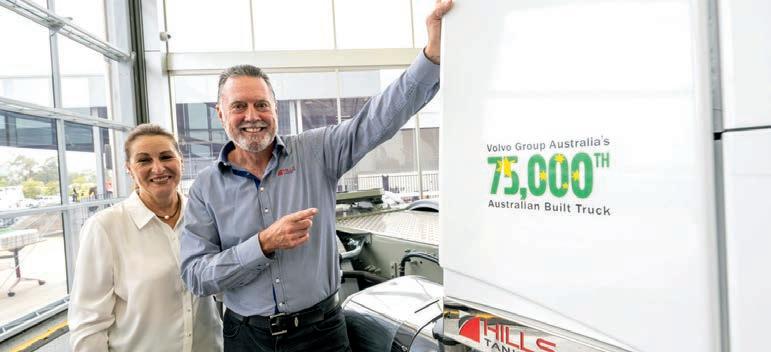
“With this truck, VGA has demonstrated that automotive manufacturing is alive and well in Australia. Our Wacol plant has been operating since 1972, and it’s earned us a place in the Australian Made Campaign – we’re proud to say that every Volvo we build carries the iconic green- and-gold ‘Australian Made’ logo.”
“The plant makes a huge economic contribution to the local area— without any government subsidies—and











supports approximately 85 local suppliers delivering more than 3,500 different components, many of which are produced here in Australia.”

Hill says that having the trucks built locally made it a lot easier to get trucks to meet the particular specifications of local regulations.
“We run a lot of our trucks under Performance Based Standards,” he says, “and it can be pretty exacting getting accreditation. Truck lengths and tare weights have to be just right to maximise payloads while meeting the specifications. Having a local manufacturer makes that easier.”

Logistics company 7R Logistics/ Blu Logistics has announced the signing of a joint co-operation agreement with renewable hydrogen project company Countrywide Hydrogen to decarbonise the trucking industry in Tasmania.
The partnership will use green hydrogen on fuel-heavy transport vehicles in 7R Logistics’ Tasmanian fleet, with other states then planned to follow.
With 7R Logistics saying road transport accounts for at least 20 per cent of Tasmania’s emissions, in Hobart it estimates the number to be 30 per cent, with these emissions counting for 220 premature deaths and 380 premature hospitalisations according to a recent University
The North American trucking industry is taking steps closer to commercial applications of longhaul autonomous driving with a recent collaboration announced.
Torc Robotics and C.R. England will be combining forces to run the program, making the most of C.R. England’s temperaturecontrolled loads and Torc’s fleet of autonomous test trucks for longhaul applications.
Torc is an independent subsidiary of Daimler Truck founded in 2005 at the birth of the self-driving vehicle revolution. Torc has 17 years of self-driving applications and offers a complete self-driving vehicle software and integration solution.
The company bringing the experience, C.R. England, has been around for more than 100 years and is considered one of North America’s premier transportation providers. Specialising in dedicated, over-the-road, crossborder Mexico, intermodal and logistics services, the company has been regularly recognised for management excellence.
The duo say they are excited to participate in the pilot with information from the tests offering unique insights into the future of autonomous trucks for long-haul applications. Initial planning will begin mid-2023, with on-road tests soon after.
Joanna Buttler, Head of Autonomous Technology Group at Daimler Truck, says much will be learned from the pilot.
“We listen very closely to our customers to understand their business requirements. Torc’s collaboration with C.R. England allows for unique insights into truckload freight that will help integrating with fleet industry logistics,” Buttler says.
“While developing a safe and reliable redundant truck platform for the integration of our partner’s autonomous technology, co-creation will bring us closer to our goal of commercializing and implementing autonomous trucking within this decade.”
Torc Robotics CEO Peter Vaughan Schmidt says the pilot will be beneficial to Torc’s business.
“Torc is thrilled to be partnering with C.R. England to better improve long-haul trucking safety for one of the premium service providers and largest refrigerated carriers in the nation,” he says.

“The data derived from the pilot will contribute to our safety and
validation efforts and use cases for autonomous trucking.”
C.R. England CEO Chad England says the pilot will help it bring better service to its clients.
“C.R. England is excited to announce our partnership with Torc for pilot activities on level 4 autonomous test trucks. We believe this innovation will eventually provide the ability to expand our network safely, with high levels of service to our customers, all while enhancing the quality of existing driver jobs,” England says.
“Specifically, by adding autonomous lanes to our network, we can expand our customer offerings and create more structured jobs for drivers at both ends of autonomous runs.
Torc’s deep integration with Daimler Truck AG makes our two organizations a perfect fit for piloting this new technology.”
of Melbourne study.
7R Logistics says this makes its latest partnership and its decarbonisation plans even more vital.
Countrywide Hydrogen is aiming to have three Tasmanian hydrogen refuelling sites strategically located near Hobart, Launceston and Burnie, allowing the state’s major transport routes to be covered by a network of refuelling stations.
Countrywide says hydrogenpowered trucks deliver similar or better performance than diesel equivalents in terms of power output, torque, payload, refuelling time, range and whole-of- life cost of operation.
“This partnership with 7R will help to promote the benefits and fast track the development of green hydrogen projects in Tasmania. To help achieve this, we are calling for support where possible from the state government to help enable the transition to zero-emissions road transport,” Countrywide Hydrogen managing director Geoffrey Drucker says.
“With government support, together we can promote the commitment to zero-emissions road transport, while actively encouraging and supporting others in the industry to transition to zero emissions.”
Hydrogen-powered trucks will be available in Australia to coincide with Countrywide’s first hydrogen production in Tasmania. As a result, 7R has become the first transport operator in the state to sign on to offer a zero-emissions option to customers.
7R has committed to offering a zero-emissions heavy vehicle transport alternative to its customers currently using fuel cell trucks fuelled by renewable hydrogen from Countrywide.

7R currently operates 12 heavy vehicles powered by diesel in Tasmania, on average operating over 200,000 kms a year and each emitting 250 tonnes of carbon dioxide annually.
7R Logistics managing director Tim Jensen says extrapolating these numbers across this fleet will mean emissions reductions of 3,000 tonnes a year by converting to zero emission fuel cell vehicles.
“With so many Australian companies announcing their emissions reductions targets, there is a strong appetite among them to secure freight services that offer a zero-emissions alternative,” Jensen says.
“We are pleased to be partnering with Countrywide to offer our customers a critically fast-refuelling hydrogen electric option.”
UD Trucks is in celebration mode as 2023 marks 50 years since UD first reached Australian shores. UD is using the milestone to reflect on its decades of progress and innovation, and now looks ahead to the next 50 years and beyond.
At this year’s Brisbane Truck Show, UD launched an innovative new product range that epitomised UD’s current capabilities.


From UD’s founding father Kenzo Adachi-san’s pursuit of Ultimate Dependability more than 85 years ago in Japan, UD says it’s extremely humbling for the brand to see its vision and mission remain as strong as ever in Australia since 1973 and UD’s continued commitment to going the extra mile to achieve better life for its people and the planet.
It started back in 1973, when the UD CK40 was the first model to hit Australia’s roads, and the decades to follow would see countless innovations including the release of its ESCOT AMT (Automatic
Manual Transmission) that became the benchmark for the heavy-duty industry at that time.





The ESCOT was the world’s first commercialised radar laser collision prevention system and the world’s first selective catalytic reduction (SCR) system, revolutionising the industry’s emission reduction journey.
“Our latest products being launched here in Australia is a clear sign that UD’s incredibly strong history and drive to innovate is continuing,” UD Trucks Australia vice president Lauren Pulitano says.
“Not only did we have our new 8L Quon Agitator with ESCOT AMT on the stand, but we will launched new advanced safety features and an enhanced 11L engine.”
Brisbane Truck Show attendees were able to see the new Quon CG 8x4 16 pallet extra-long wheelbase vehicle on display with an eye-catching curtain artwork.
The UD brand also took over
King George Square in Brisbane CBD, where it showcased a head turning brand activation to celebrate its 50-year milestone. The activation was a showstopper, with a striking 3D style artwork on display that visually captured the rich history and innovations of UD over the decades.
“We have been so proud to be celebrating our 50 years here in Australia during this year’s Truck Show. We would like to

extend our gratitude to all of our customers, dealers and partners for supporting us on this journey, and we thank them for making 50 years in Australia possible,” Pulitano says.
“It is an incredibly exciting time be leading a brand here in Australia that has an ambition not to just make better products for our industry, but to make the industry better through its products.”



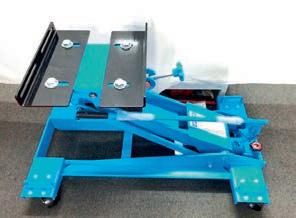














Long serving Patterson Cheney
Trucks dealer principal, Terry Jewson, has announced his retirement. The news was made official in mid-April on the same day he first commenced working for the business 41 years ago.

Presentations have been made to Jewson by senior management at the Dandenong branch and by Isuzu department heads at Derrimut.
Early mentors like Alan Weston and David Cheney impressed upon Jewson the importance of work ethic and maintaining relationships.
“With not only your customers but your staff also and the manufacturers you are dealing with,” Jewson recalls.
“A lot of that is absorbed early days when you first start work doing whatever it is you do and understanding what that work ethic is meant to be. There’s no magic pill.”
Loyalty and longevity of employment with one employer these days, Jewson noted, was not held in the same regard today as it was in previous generations.
“The younger ones tend to
change jobs really quickly. I still struggle with that personally,” he says.
“There’s the thrill, for me, of dealing with customers both new and ongoing.
“We’re still dealing with customers that I’ve dealt with for 38 years. We still have those wonderful relationships in place and that’s what it’s all about.”
As far as personal achievements go, Jewson is most satisfied with overseeing the construction of the Westar Truck Centre in Derrimut.

“It was a greenfield site on 17 acres of which we have developed ten acres and it was state-of-the-
art and it still is state-of-theart dealership and it’s been in business for 13 years,” he says.
“It still looks the part and it means a hell of a lot to me.”
However, it hasn’t been without its challenges. In 2007 Isuzu first introduced its Diesel Particulate Diffuser which required a whole new process to be put in place.
“They were first to market with that new technology and it was hard work,” Jewson recalls.
“That was not without its heartache, but we got over the hurdles very well because of the brand and the people we deal with within that brand.”
Jewson maintains, without hesitation, that his favourite vehicle is still, today, the Isuzu SBR422 series.
“It was the flavour of the month and really the favourite truck out there of nearly everybody,” he says.
“It was the truck to have. It was bulletproof and still is today.”
The advent of the internet and, with it, email has been the biggest seismic change in how business has been conducted in those 41 years.
“Back in my day when you were selling in you had to get off your bum and go visit the customer and go through the quote and all the rest of it,” Jewson says.
“Now everything is done by email, and you’ve got to make sure that you maintain those
relationships in a different way.”
Prior to the conveniences of the internet, members of the sales team were not immune to extending themselves or their time to get a deal done in a physical world.
“Back in the day you’d be out at 10pm at night if you had to. I used to come into work and grab a truck and do demos on Sunday afternoons if I had to. Those are the things that you were prepared to do.” Jewson says.
“I think things have changed to the degree that you no longer have to do those things either which probably a better thing for your employees.”
The changes kept coming as COVID redefined the business landscape. Jewson is still in awe how the business rallied to adapt to operations in Melbourne, the longest locked down city in the world.
“How we coped for those two years without opening the front door was just amazing,” he says.
The future, for the moment, promises plenty of golf, more time with the grandchildren and his newfound hobby of making sausages.
In winter Jewson and his wife Julie will head to Cape York in Queensland for a well-earned holiday.
“We’re away all of July and August and come back just in time to see Collingwood play in the Grand Final,” Jewson smiles.
After 41 years of service, Patterson Cheney Trucks dealer principal Terry Jewson has announced his retirementABOVE: Senior management from Isuzu Australi, Westar and Patterson Cheney Trucks were present to wish Terry Jewson all the best in his retirement BELOW: From left: Cameron Bertalli (CEO & MD Patterson Cheney), John Spizzirri (company secretary), Terry Jewson and former Patterson Cheney dealer principal David Cheney

The Livestock, Bulk & Rural Carriers Association (LBRCA) 2022 Young Driver of the Year winner, James Papworth (pictured below), is finally heading off on his trip of a lifetime to the US and Canada in July as part of last year’s prize.

Taking a few weeks from his driving position with Martins Stock Haulage, James and his partner Laura will kick off their adventure in Los Angeles where they will visit Santa Monica and Venice Beach
before heading to Las Vegas – not without a detour through Calico Ghost Town and the renowned Death Valley.
While in Las Vegas they will tour the Grand Canyon by helicopter, zip line through the Red Rock National Park and see a Carrie Underwood or Circ Du Solie Vegas-style show.
The next couple of weeks will be spent touring Dallas, Fort Worth, Austin, San Antonio, Houston, New Orleans, and Seattle before heading over to Calgary Canada to finish the trip at the Calgary Stampede.
The Calgary Stampede is renowned as the ‘Greatest Outdoor Show on Earth’. The 10-day event includes the world’s largest rodeos, a parade, midway, stage shows, concerts, agricultural competitions and chuckwagon racing.


Also at the LBRCA, long-term members Rod and Dianne Peisley hung up their keys at the end of June after a long-serving, successful career in the transport industry.
Rod has spent a lifetime dedicating himself to the trucking industry. He started out at the age of 14 washing trucks for his uncle Colin Crossley, and by 19 he was carting produce in and out of Port Kembla each week and wool throughout regional NSW in between.

While Rod was on the road, Dianne was busy pursuing a career in nursing. Fast forward a couple of years, and a few trips in the passenger seat of the truck, Rod casually says to Dianne, “if you’re going to come with me, you may as well get your truck licence too”.
In 2004, Rod and Dianne started their own transport business, RP & D Peisley Livestock Transport, specialising in the movement of livestock. Joining the LBRCA (then LBCA) two years later in 2006, Rod and Dianne attended their first association conference held in Canberra that same year.
Elected LBRCA committee members for over a decade, Rod and Dianne have immersed themselves in various steering committees, forums and industry events across their reputable careers. They are founding members of the Hilltops Shire Transport Group, and in 2017 Dianne

was recognised as the inaugural recipient of the LBRCA Honorary Member Award in recognition of her extensive work in the areas of animal welfare, driver welfare and safety as well as biosecurity and emergency animal diseases.
Rod and Dianne are planning to hit the road in their caravan towards the latter part of 2023 to start enjoying their well-earned retirement.

Three against one
Melbourne truck driver Paul Jean has taken a big gamble with his ‘not guilty’ plea following three police officers nabbing him for not wearing a seatbelt at traffic lights.

The driver refused to pay the initial fine, instead heading to the courts, the Moorabbin Magistrates’ Court to be precise.
According to Melbourne’s Herald Sun newspaper, Jean pointed out that the video footage from the police dashcam and body worn footage was inconclusive as to whether he was wearing a seatbelt or not.



Jean attempted to explain that the configuration of the seatbelt in a truck is different to that of a car.
However, the magistrate decided to stick with the coppers’ verdict on the basis they had sworn under oath that Jean was not wearing a seatbelt. Jean copped a $370 fine with no conviction recorded for not wearing a seatbelt while stationary.








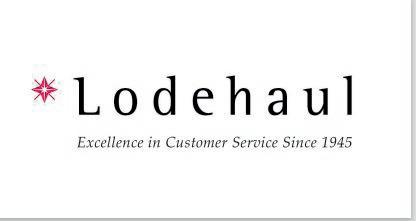


The Federal Government under Anthony Albanese is taking some steps in the right direction when it comes to listening to the concerns of truck drivers around safety and working conditions. They have developed the Heavy Vehicle Rest Area Steering Committee to find out how to best improve heavy vehicle drivers resting conditions, as part of their $140 million heavy vehicle rest area initiative. This tells me that they are taking our concerns about safety in the industry seriously and are willing to invest in ways to ease the burden that comes with long haul truck driving.
We must remember that at the moment this committee is in its infancy. However, in my opinion, one thing that gives this committee credibility is the inclusion of truck drivers and operators like Heather Jones, Kellie Boland, Craig Forsyth, Bruce Skelton, Rod Hannifey, John Beer and myself to give a real firsthand account of the challenges we face finding suitable rest areas, what is needed in them, where they should be located and by us consulting with other drivers to bring their ideas and opinions to the table.
I believe that involving us will ultimately help steer the outcomes we need because we are giving meaningful insights that can

only come from experience and consultation with our peers.


The leading driver, no pun intended, of this committee was Senator Glenn Sterle from Western Australia, who has been instrumental in raising awareness of truck safety concerns and will be the Chair. Senator Sterle wrote an important report titled, Without Trucks Australia Stops: the development of a viable, safe, sustainable and efficient road transport industry. It’s a long title, but it goes to the heart of making the industry safer for all of us drivers and operators.
Senator Sterle’s report found that heavy vehicles are disproportionately involved in road crash casualties, averaging 180 deaths per year.
Remember, when a truckie dies in a crash, the social impact this has on families is immense and, as the report showed, so is the economic impact on businesses and by extension, the public. While of course fatalities are the thing that grabs the headlines, we
also can’t forget the amount of people that are injured in accidents, a figure that has been steadily increasing over the years. In fact, an average of 1700 hospitalisations resulted from heavy vehicle accidents between 2008 and 2017. Both fatalities and injuries impact the ability for families to cover mortgages, rent, bills and everyday costs that families are subject to.
As if margins aren’t slim enough as it is for owner-drivers and contractors in the transport industry, now the latest Federal Government budget has seen fit to add more pressure to an already struggling industry by increasing the road user charge by six per cent each year for the next three years, effectively increasing our fuel cost by six per cent a year. But the thing is it won’t stop there.
As we obviously will attempt to increase our rates to compensate for this rise, our suppliers of tyres, parts and repairs will obviously increase their prices, not to mention the cost of living on the road will also increase.

Registration costs will also rise, so the reality is that we will need to increase our rates by well more than six per cent. I can’t really see that happening under the current conditions.
As I have stated in this column numerous times before, the Federal Government has committed to reform that will make our industry safe and sustainable for all. We need to put the pressure on the government to honour their commitment; they have stepped up to the plate with their work on rest areas and now it’s time to step up with the rest of the package.
Senator Sterle has left no stone unturned in his report focusing on the various risks associated with truck driving industry that underline the need for reform. These range from: rushing to meet delivery deadlines, environmental factors like bad weather combined with poor road surfaces, how odd shift hours cause fatigue, bad vehicle design, exposure to fumes and even the physical stress of lifting heavy loads.
A lot of these issues go beyond just rest stops but highlight the wider range of factors that contribute to making the transport experience a safer one. As such, Senator Sterle’s report also called for setting a minimum wage for drivers, more road infrastructure, better driver training, cost recovery issues for owner-drivers and operators, a stronger relationship between the industry and the powers that be.
I look forward to the day when we finally get the investment, the infrastructure and the legislation we need from government to make our industry – from gig economy food delivery workers in the city to road train operators in outback Australia –the safest it can be.
I’m optimistic that one day our families and loved ones will no longer need to be anxious about our time on the road and whether we’ll come home safe, happy and able to spend some quality time with them.
“We will need to increase our rates by well more than six per cent.”
FREIGHTLINERCENTURYCLASSCST120 2004,CUMMINSSIGNATUREENGINE, RTLO20918BGEARBOX,MERITORRT46-160DIFFSONAIRLINERSUSPENSION,CAB PARTS,TUBELESSRIMS,HYDRAULICS.WRECKING.W2549. TA1176462. POA



STERLINGAT9500 2003,DETROITBK12.7LENGINE,AUTOGEARBOX,RT46-160 DIFFSONAIRLINERSUSPENSION,CABPARTS,HYDRAULICS,ALUMINIUMTIPPER BODY.WRECKING.W2545. TA1170119. POA
FREIGHTLINERARGOSY 2019,DD15ENGINE,ULTRASHIFTGEARBOX,MERITOR RT46-160DIFFSONAIRLINERSUSPENSION,CABPARTS,ALCOAS.WRECKING. W2550. TA1176464. POA








VOLVOFH121 2001,D12CENGINE,VT2514GEARBOX,EV87DIFFS,HYDRAULICS, CABPARTS,ALCOAS,ALUMINIUMBULLBAR.WRECKING.W2543. TA1170113. POA
MACKTRIDENT 2013,MACKMP8-500HPENGINE,MDRIVETRANSMISSION, MERITORRT46-160DIFFSONHENDRICKSONSUSPENSION,CABPARTS, HYDRAULICS,ALUMINIUMTIPPERBODY.WRECKING.W2547. TA1170122. POA
FREIGHTLINERFL112BUSINESSCLASS 1997,CUMMINSM11ENGINE,13SPEED GEARBOX,RT40-145DIFFSONAIRLINERSUSPENSION,CABPARTS,STEELTIPPING BODY,HYDRAULICS.WRECKING.W2546. TA1170120. POA
MACKVISION 2007,MACKCCRSENGINEPARTSONLY,RTLO20918BGEARBOX, MERITORRT46-160DIFFSONHASSUSPENSION,DROPONCAB/SLEEPER,DROPON BONNET,HYDRAULICS,ALCOAS.WRECKING.W2551.
FREIGHTLINERARGOSY 2013,DETROITDD15ENGINE,RTLO20918B GEARBOX,MERITORRT46-160DIFFSONAIRLINERSUSPENSION,ALUMINUMFUPS BULLBAR,CABPARTS.WRECKING.W2540. TA1158892. POA
MANTGA26-480 2007,MAN480HPENGINE,ZFAUTOGEARBOX,AIRBAG SUSPENSION,CABPARTS,BULLBAR.WRECKING.W2544. TA1170116. POA



FREIGHTLINERARGOSY 2010,Detroit14LEGRengine,RTLO20918AS3 gearbox,MeritorRT46-160diffsonairliner,cabparts,fueltanks, alcoas.Wrecking.W2527. TA1137354. POA
KENWORTHT408 2008,CumminsEGRengine,RTLO20918Bgearbox, SpicerRT46-170diffsonairglide460,cabparts,fueltanks,alcoas. Wrecking.W2528. TA1137355. POA

FREIGHTLINERCORONADO 2013,DD15ENGINEPARTSONLY,RTLO20918B GEARBOX,MERITORRT46-160DIFFSONAIRLINERSUSPENSION,DROPON CAB/SLEEPER,RTSA/CUNIT,ALCOAS.WRECKING.W2552. TA1176470. POA



With up to 600 horsepower and 2,050 lb-ft of torque, the big bore workhorse provides efficient and dependable power and performance without compromise. Detroit’s advanced technology also means GHG17 requirements are met through innovative fuel efficiency resulting in lower emissions.
This power, performance and efficiency prowess is backed by our industry-leading warranty and extended coverage packages that ensures the highest level of support for our customers.
Combined with superior fuel economy and the absence of a midlife change out, the DD16 delivers an enviably low total cost of ownership and maximum uptime.
This is all backed by our well-established and extensive national service and support network which, together with our highly skilled factory-trained technicians, means you can count on getting the right advice when you need it.
With Detroit, there’s no compromise.